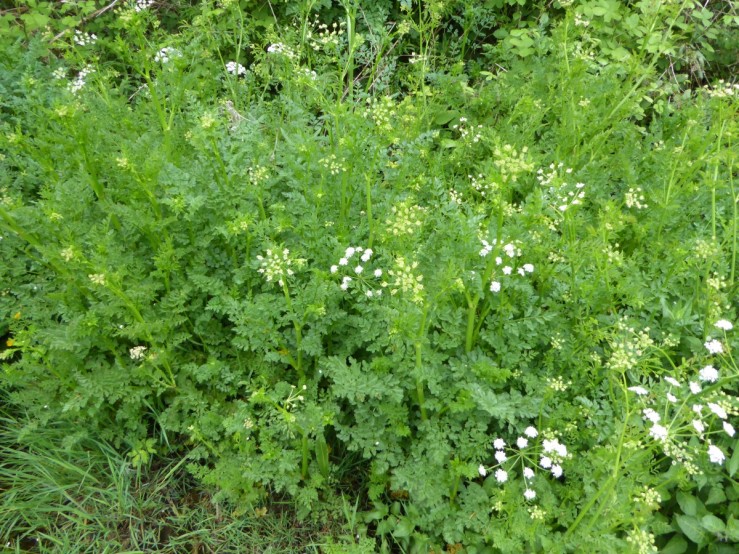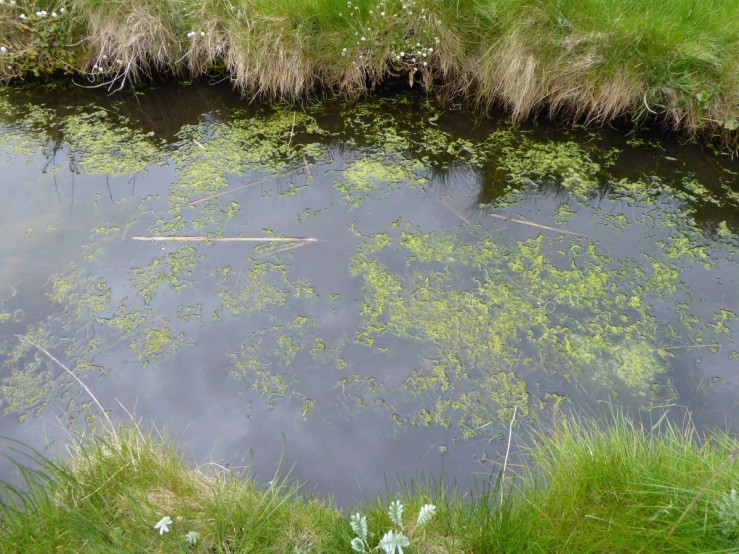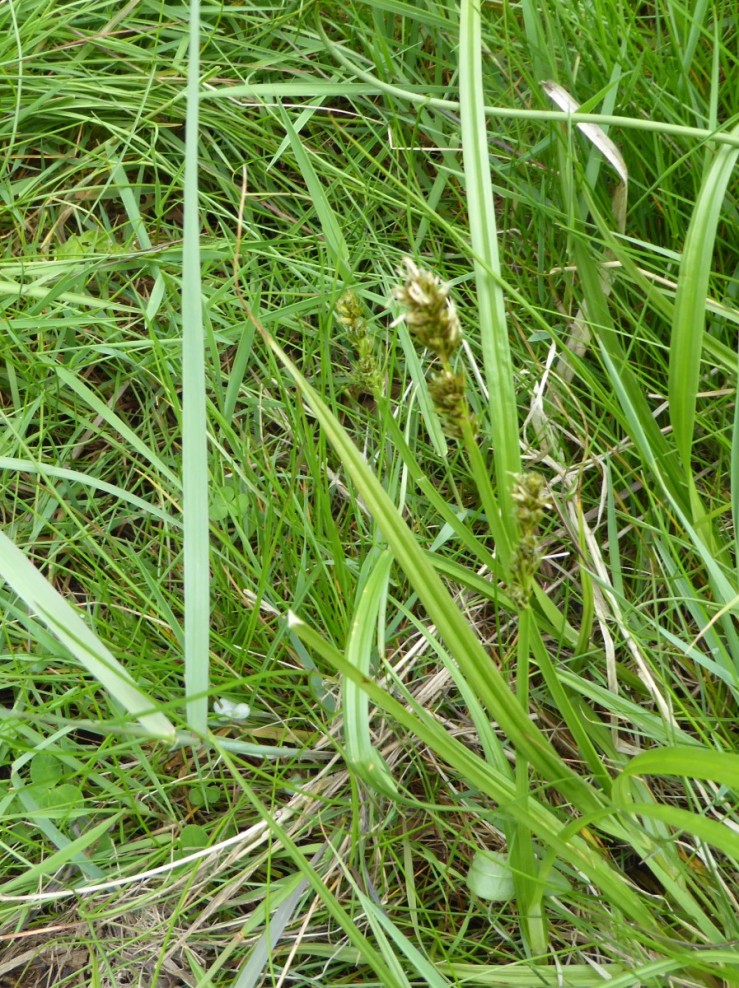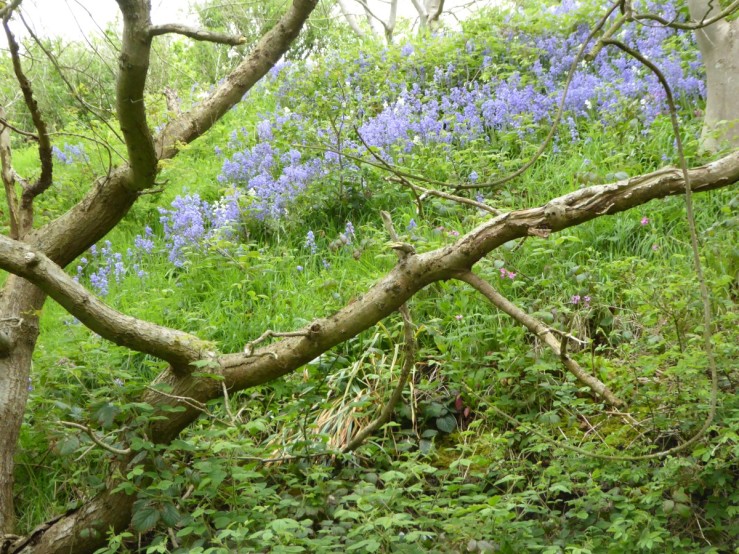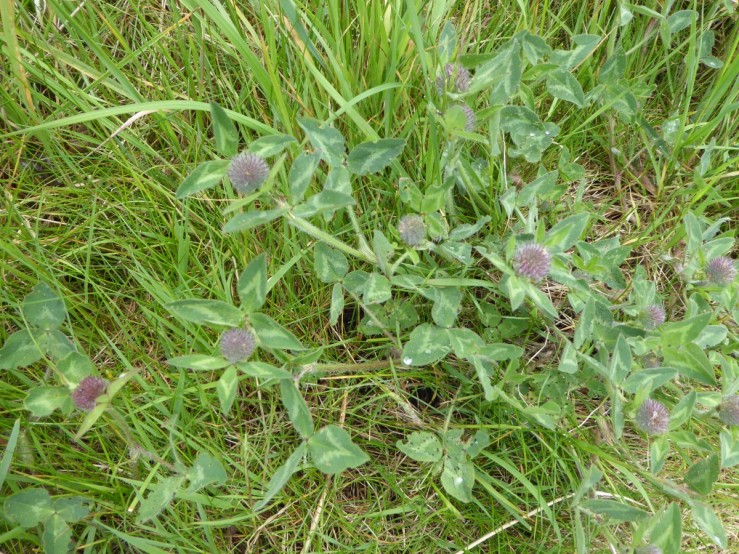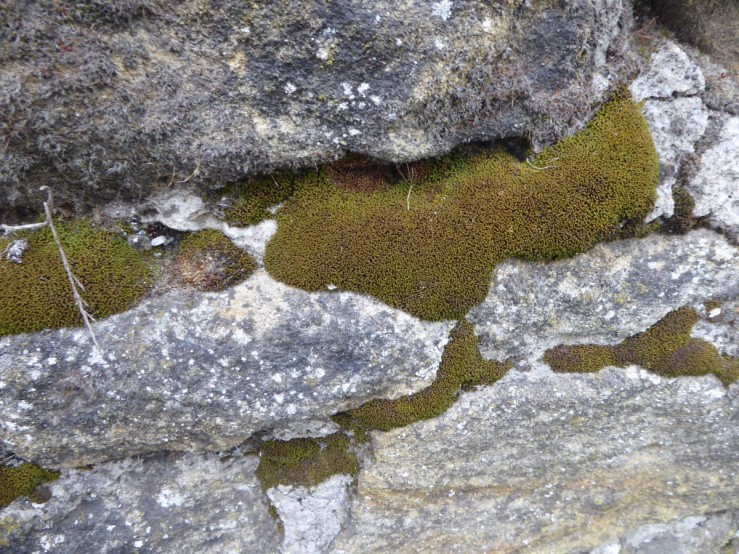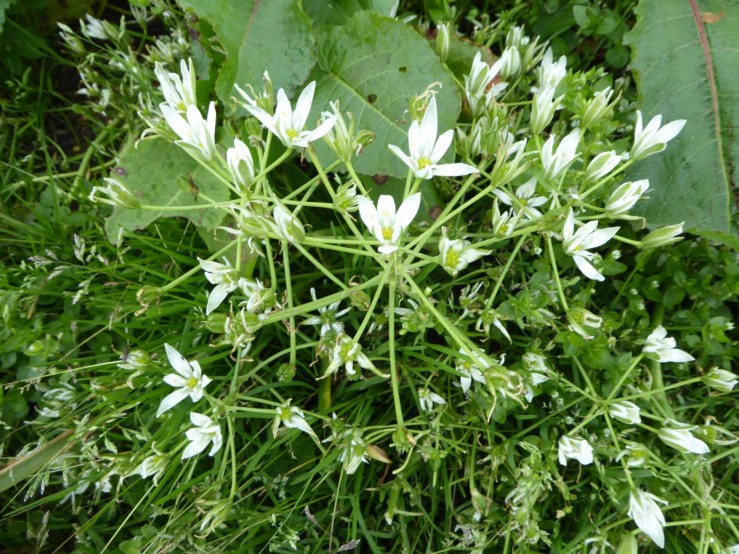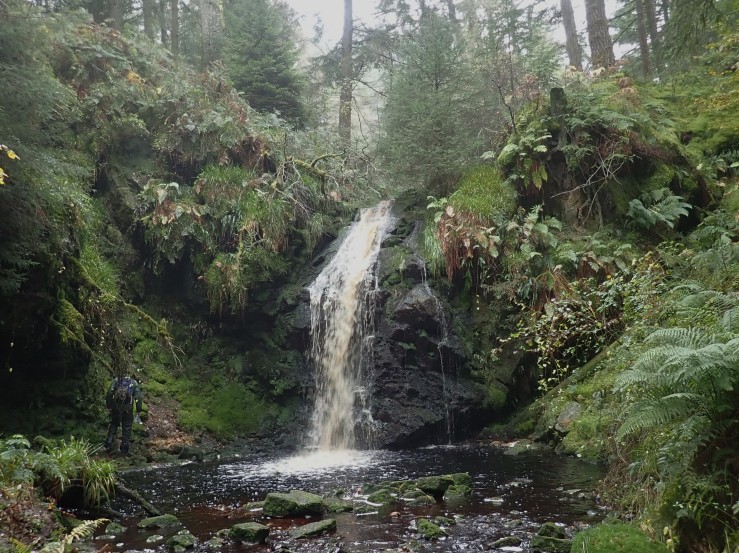
This secluded waterfall on the edge of Kielder Forest, now mostly conifer plantation, proved an interesting field trip for Ferns, Bryophytes, Fungi and Lichen. Linn is a Northumbrian word for a waterfall or the pool at the base of it. The Blakehope Burn tumbles over a sandstone escarpment in the Carboniferous sequences that make up most of Northumberland’s bedrock to form an impressive cascade. We visited in late October but Pink Purslane (Claytonia sibirica) was abundant and still in flower by the base of the fall.
The picture below is of Scots Pine (Pinus sylvestris), a species regarded as one of the three native conifers of the UK, but only the subspecies scotica is a genuine native. These are grown from non-native seed.
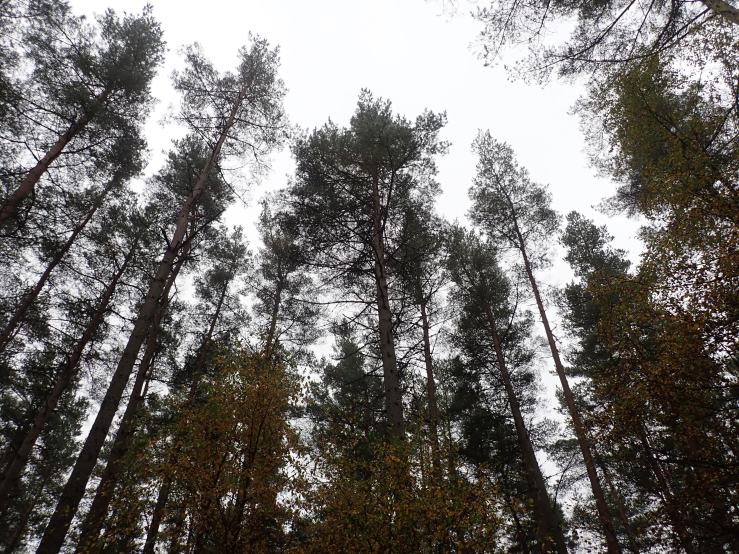
The forest included large stands of Sitka Spruce (Picea sitchensis) and Douglas Fir (Pseudotsuga menziesii) both of which were originally introduced from the US by the botanist David Douglas. On the outskirts of the forest near the car park deciduous trees were still in green leaf: Common Alder, Goat, Grey and Eared Willow were thriving. Eared willow (Salix aurita) native to Europe, is a multi-branched woody shrub and a pioneer species, commonly occurring in wet sites in the Caledonian Forest and upland Northumberland. It is identified by its conspicuous stipules.
It was too dull and wet for successful photography but Ferns such as this Lady fern (Athyrium filix-femina) shrugged off the rain.
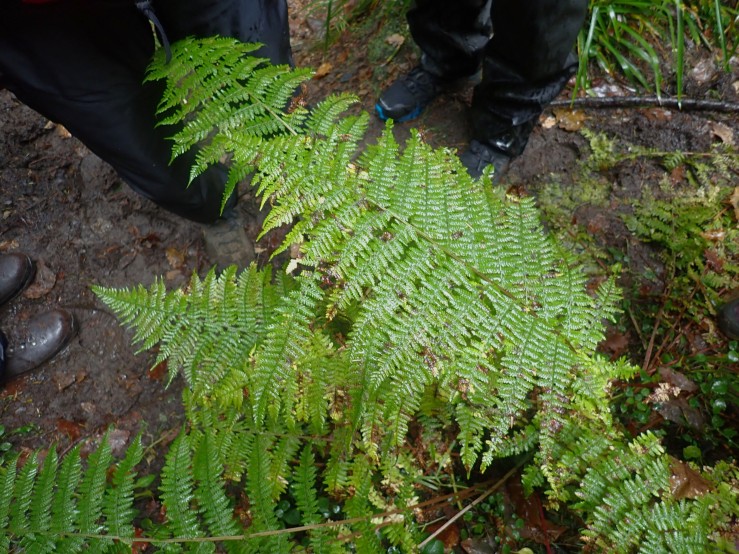
Common Polypody (Polypodium vulgare) often grows as an epiphyte, in this case on a side branch of a Sessile Oak (Quercus petraea).
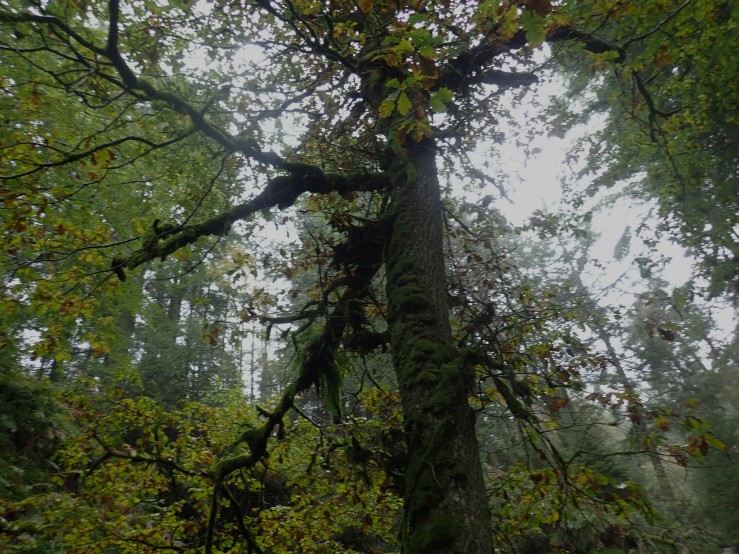
Various ferns were noted: Hard fern (Blechnum spicant), Male fern ( Dryopteris filix-mas), Borrer’s scaly male (Dryopteris affinis subsp Borreri), Broad Buckler (Dryopteris dilatata), Lemon scented (Oreoptteris limbosperma) and Bracken (Pteridium aquilinum).
Liverworts like it wetter than ferns and this Greater Featherwort (Plagiochila asplenioides) pictured below was growing near the footpath. White Earwort (Diplophyllum albicans), Bifid Crestwort (Lophocolea bidentata) and Overleaf Pellia (Pellia epiphylla) which prefers acid soils, were recognized.
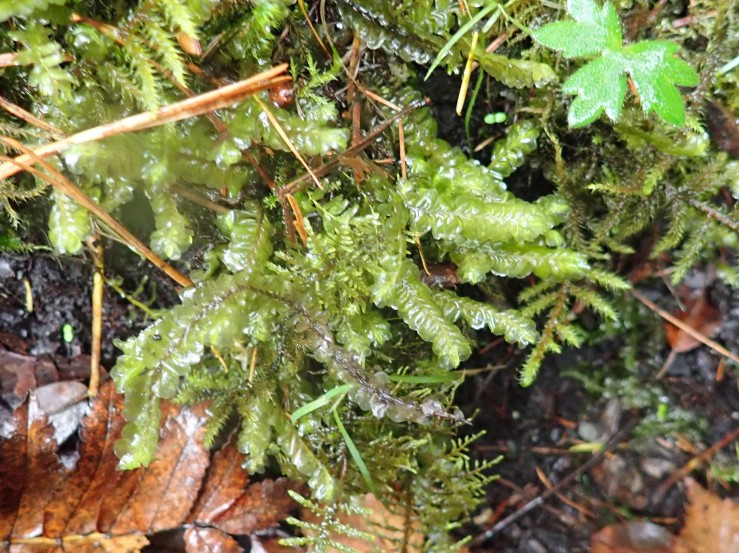
A good selection of Moss species were growing well. Common Haircap (Polytrichum commune) with Wood sorrel attempting to grow through it, likes high humidity and rainfall.
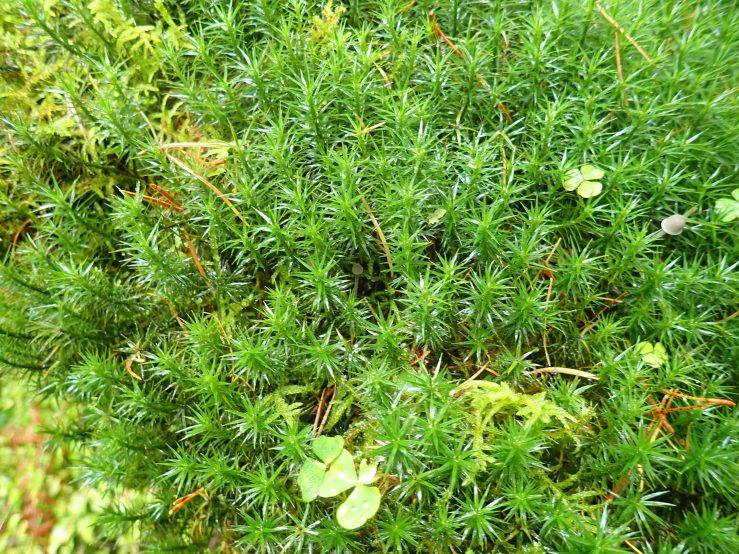
As does this Tamarisk Moss (Thuidium tamariscinum). It often appears transparent especially in the wet.
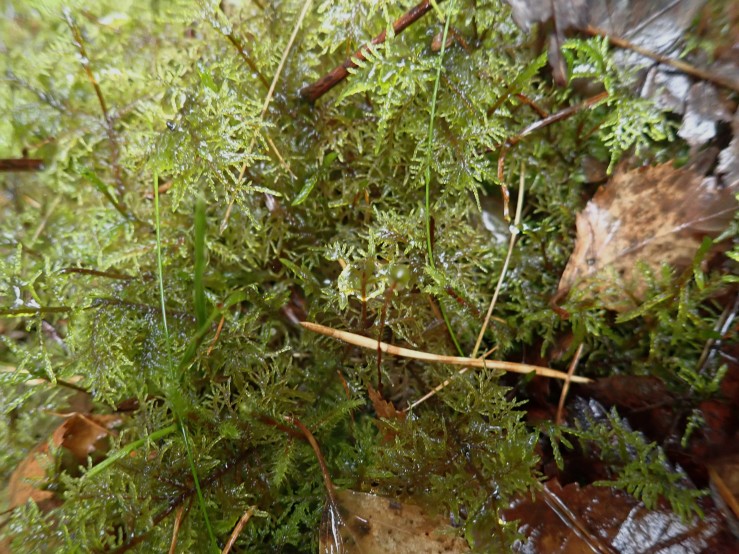
Other Bryophyte species: Bank Haircap (Polytrichastrum formosum), Juniper Haircap (Polytrichum juniperinum), Swan’s neck thyme moss (Mnium hornum), Big Shaggy (Rhytidiadelphus triquetrus) and Litttle Shaggy mosses (Rhytidiadelphus loreus). It was wet enough for Sphagnum mosses such as Flat topped bog moss (Sphagnum fallax), Blunt leaved Bog moss (Sphagnum palustre), and even Red Bogmoss (Sphagnum capillifolium) to form cushions on the woodland floor.
Among the rich lichen flora it was a surprise to see Bryoria fuscescens growing well on Scots Pine where sufficient light lit the rough bark. Platismatia glauca is the leafy lichen on the right hand side of the photo.
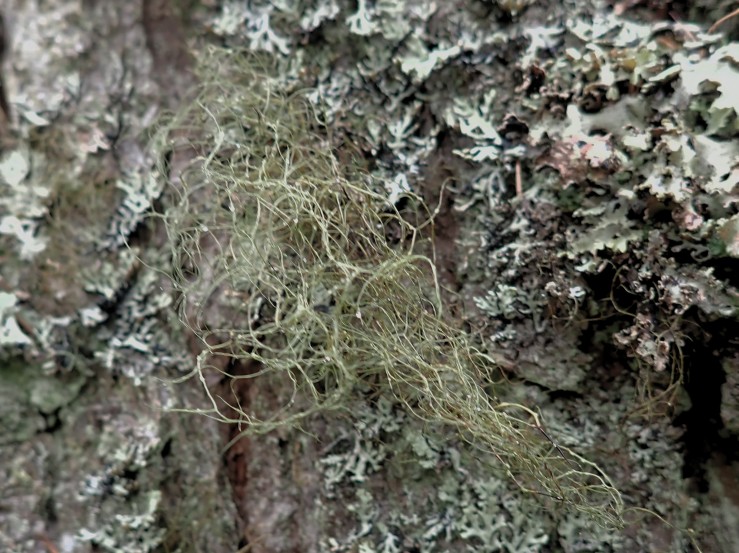
There was a confusing collection of Cladonia lichen; C foliacea is the leafy lichen at the bottom of the photo, the cups probably belong to C pyxidata but they are difficult to identfy. Parmelia sulcata is the leafy lichen at the top.
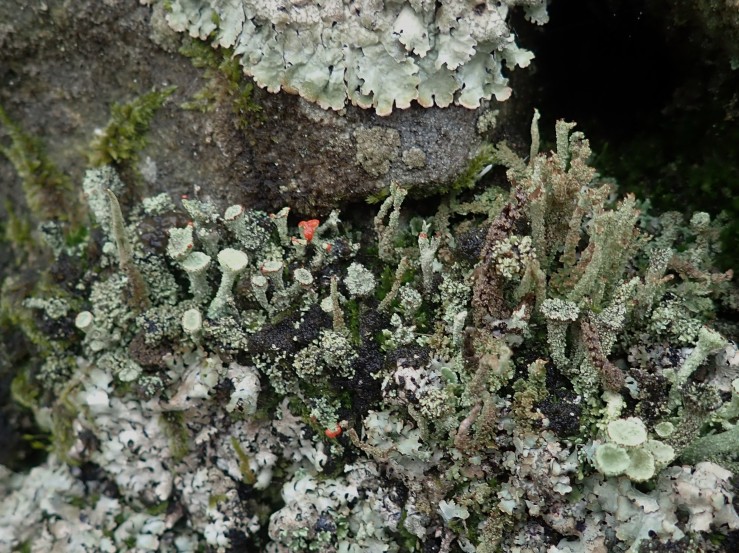
This one looks like Cladonia glauca.
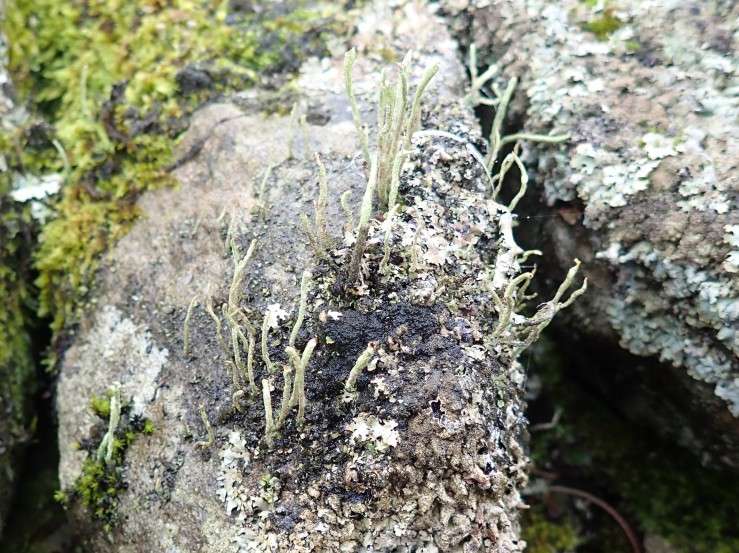
Stone also provides a good substrate for crustose lichens; Porpidia cineroatra below has ashy black fruiting bodies and black prothallus. Other lichen noted: Cladonia sulphurina, C squamosa, C polydactyla, C furcata.
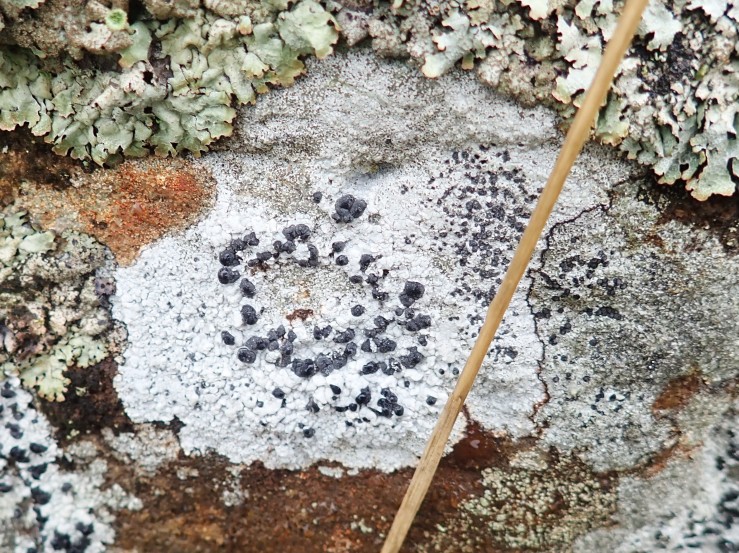
Fungi were much in evidence given the wet mild weather. This coral fungus looks like a Ramaria of some kind.
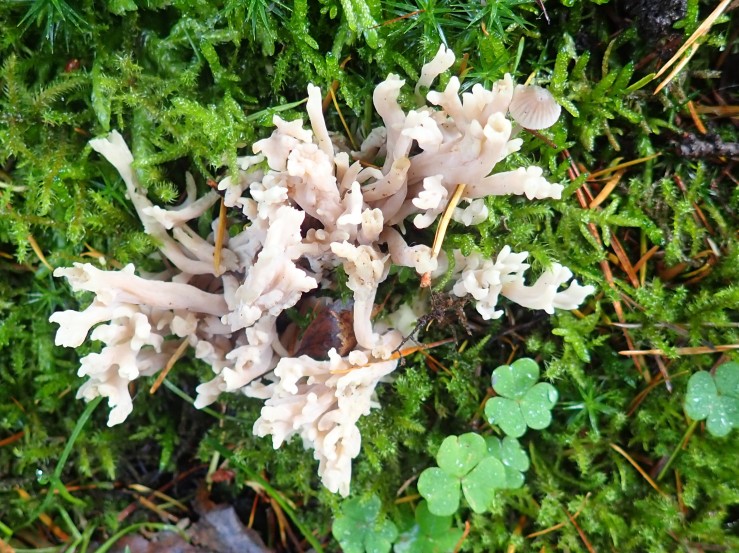
Wrinkled club (Clavicula rugosa).
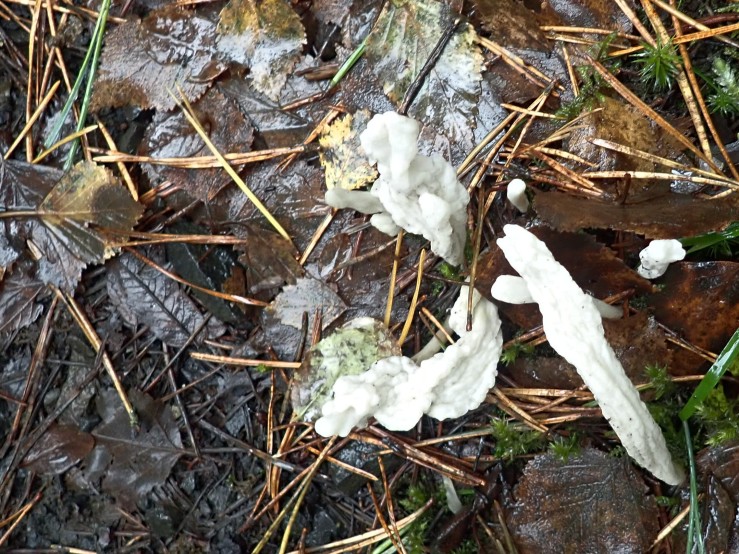
Amanita vaginata, the Grisette, though not poisonous has a volva like a Deathcap.

Ochre Brittlegill (Russula ochroleuca,) one of the most common of all the brittlegills, is plentiful in pine forests and has mycorrhizal associations with the tree roots.
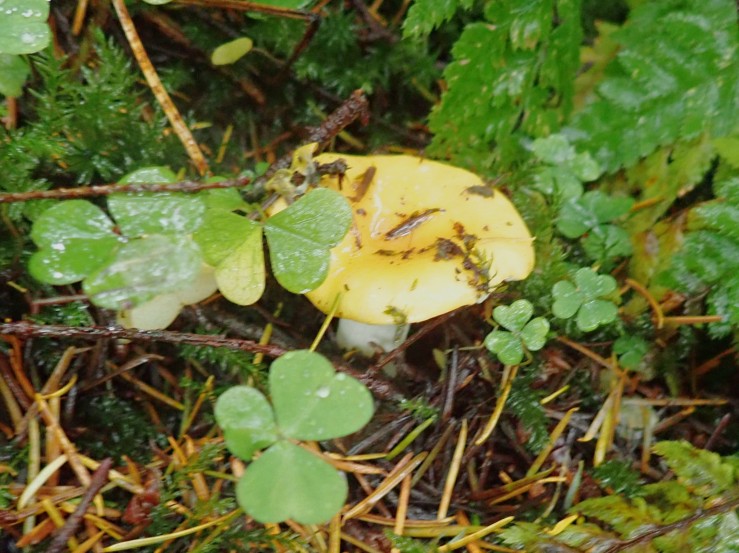
The Myxomycetes, or slime moulds, are a group of protists. They are microscopic, non-pathogenic bacterivores, which help to decompose plant remains. They are found in all terrestrial ecosystems, and about 1000 species are known worldwide. They are particularly abundant in temperate and tropical forest, but many species are also adapted to live in extreme environments. They form part of a group now called Amoebozoa. They are evolutionary significant, since they are considered to be one of the first attempts in the evolution of organisms towards multicellularity. They coalesce, in favourable conditions, into a moving plasmodial stage to meet mating partners and form spores.
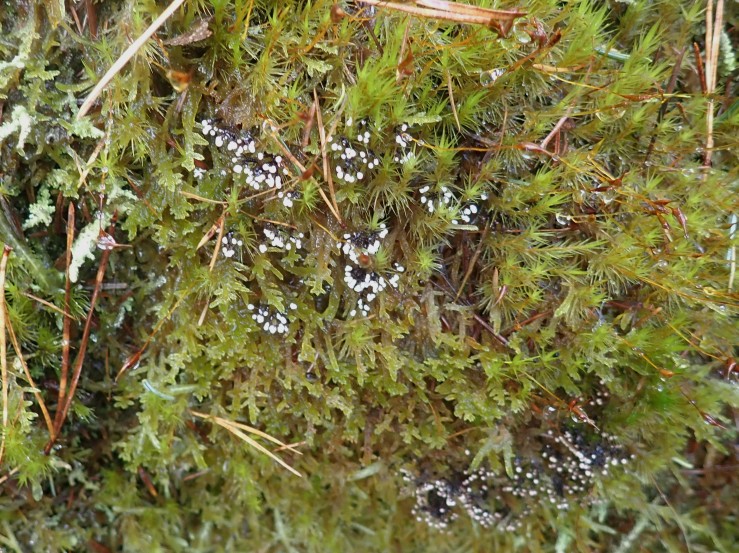
Possibly this is Badhamia folilcola which often coats grasses.
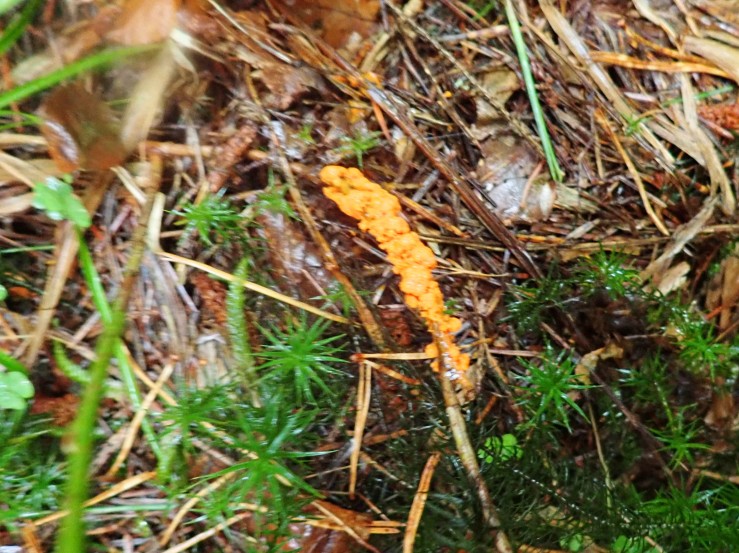
Rainbows are formed by reflection, refraction and dispersion of light in water droplets. This one appeared to have an end in the woodland but rainbows are not located at a specific distance from the observer. They are an optical illusion caused by any water droplets viewed from a certain angle relative to a light source. Unfortunately, a rainbow is not an object and cannot be physically approached. Indeed, it is impossible for an observer to see a rainbow from water droplets at any angle other than the customary one of 42 degrees from the direction opposite the light source. Even if an observer sees another observer who seems to be at the end of a rainbow, the second observer will see a different rainbow—farther off—at the same angle as seen by the first observer.
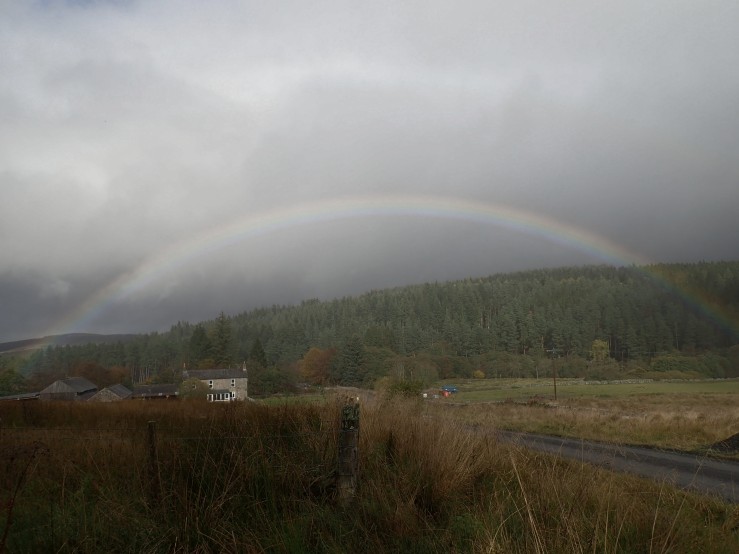
Reference: http://www.myxotropic.org/myxomycetes/
http://www.myxotropic.org/myxomycetes/
https://en.wikipedia.org/wiki/Rainbow
Lichens – Frank S Dobson
Collins Complete Guide to British Mushrooms and Toadstools – Paul Sterry and Barry Hughes
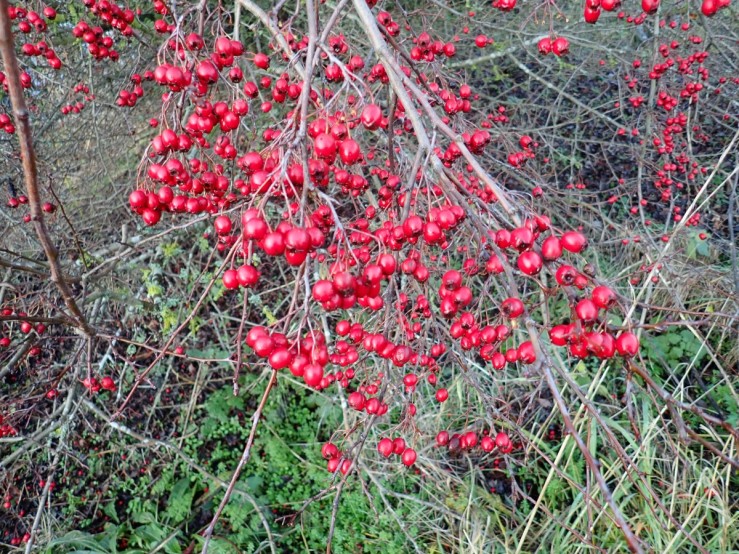
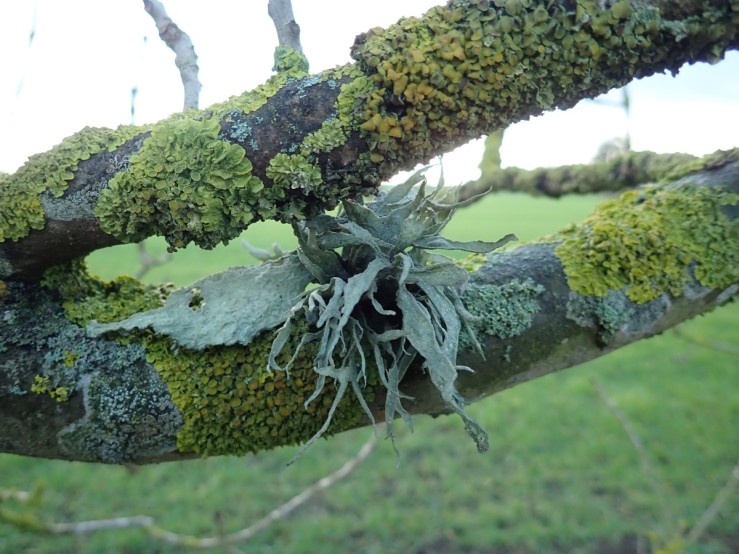
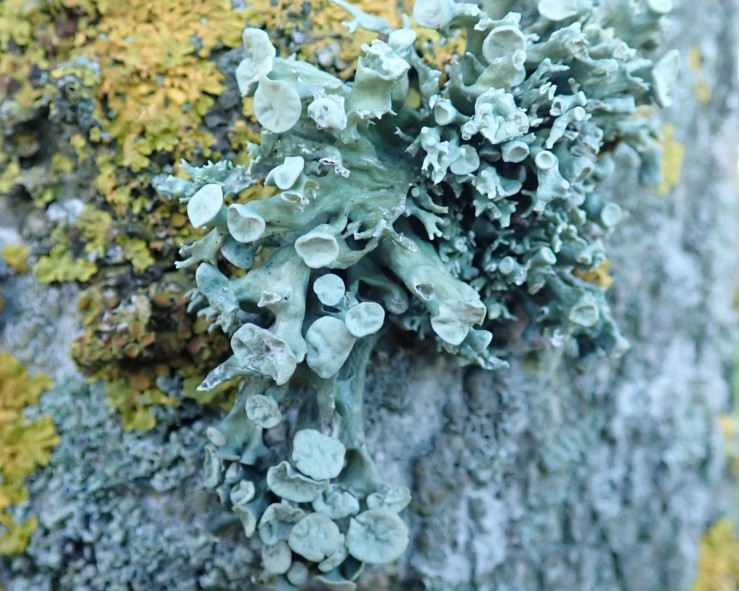
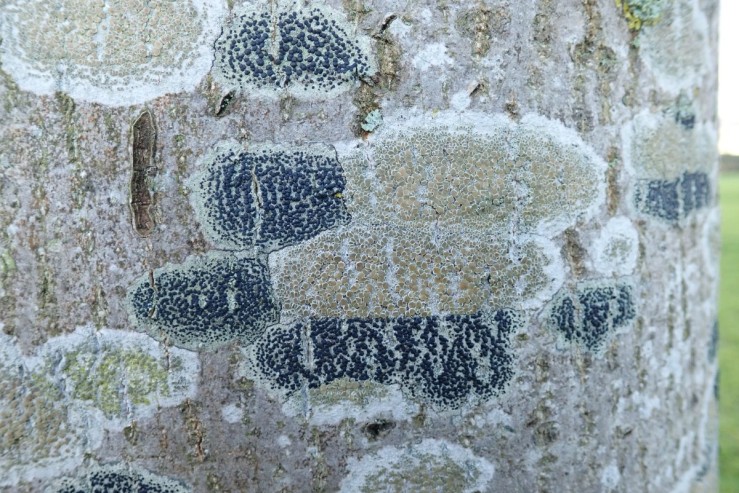
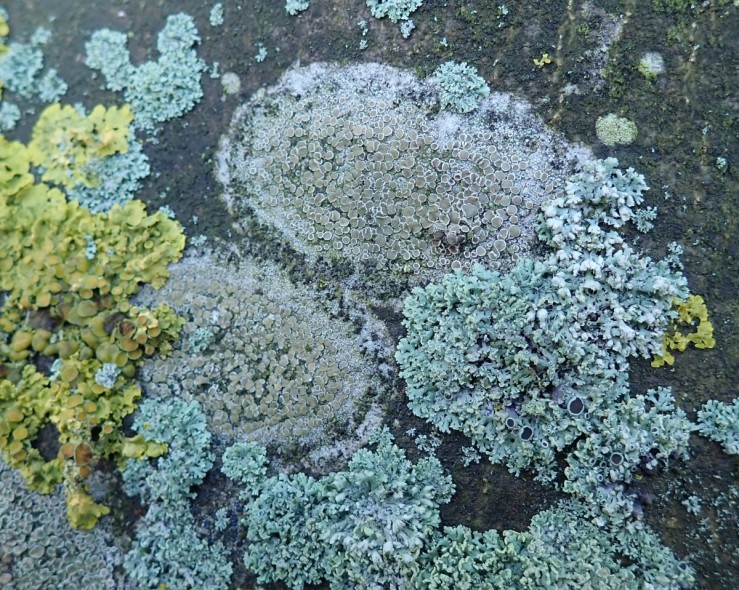
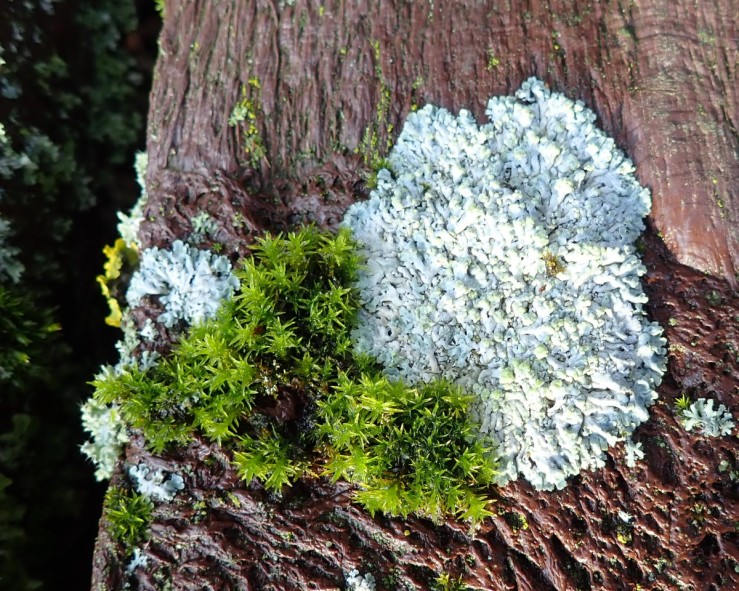
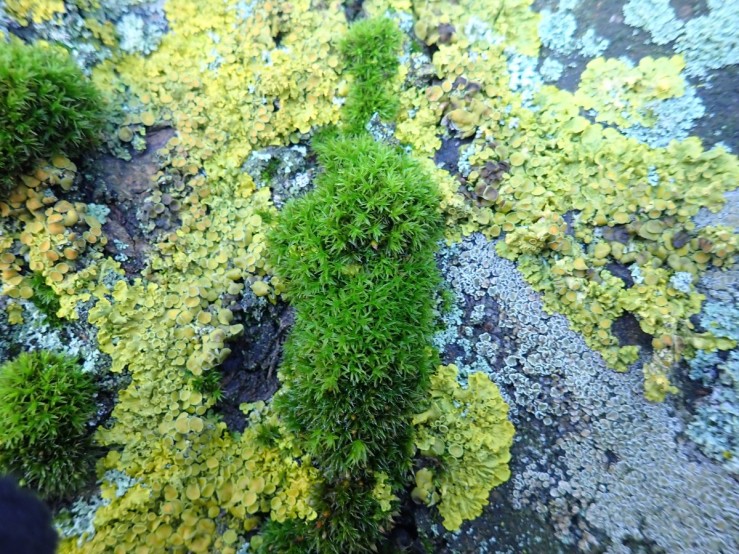
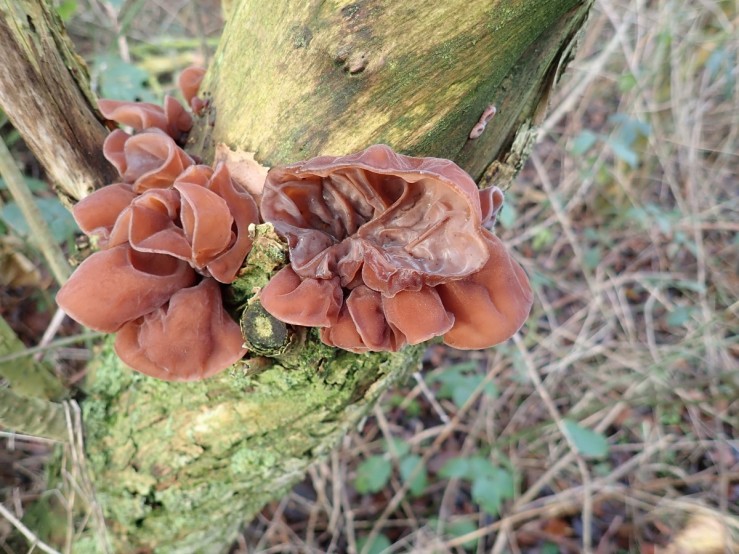
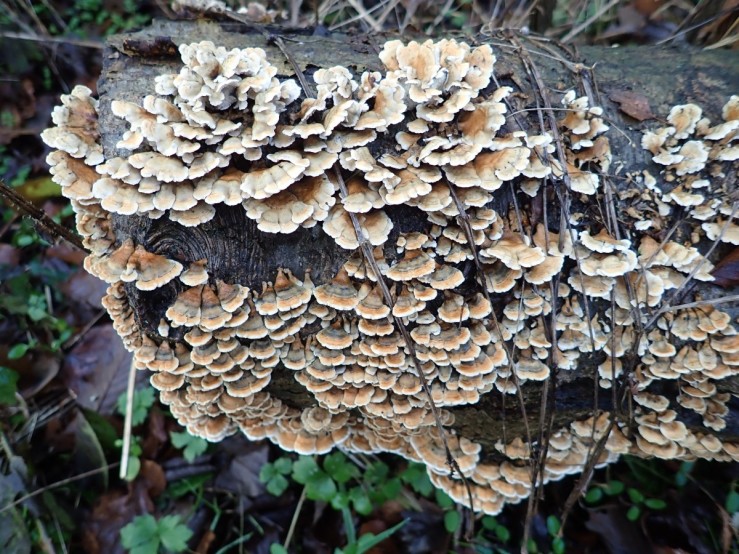
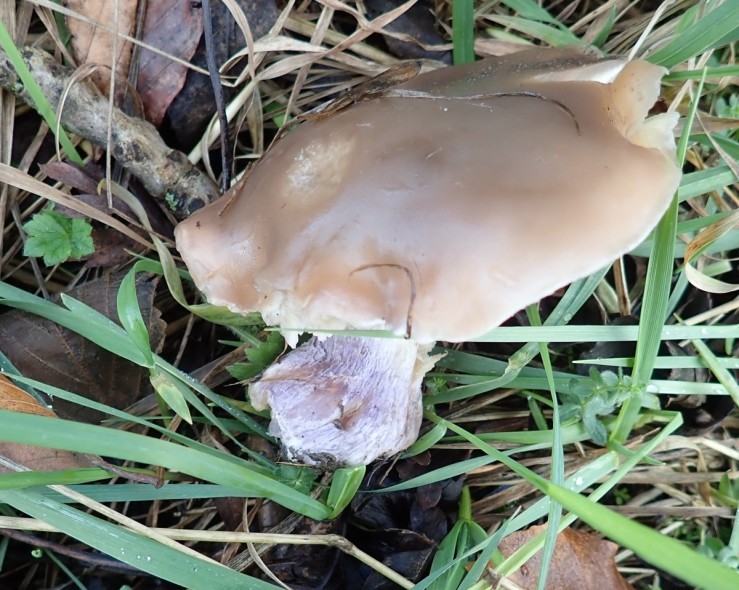

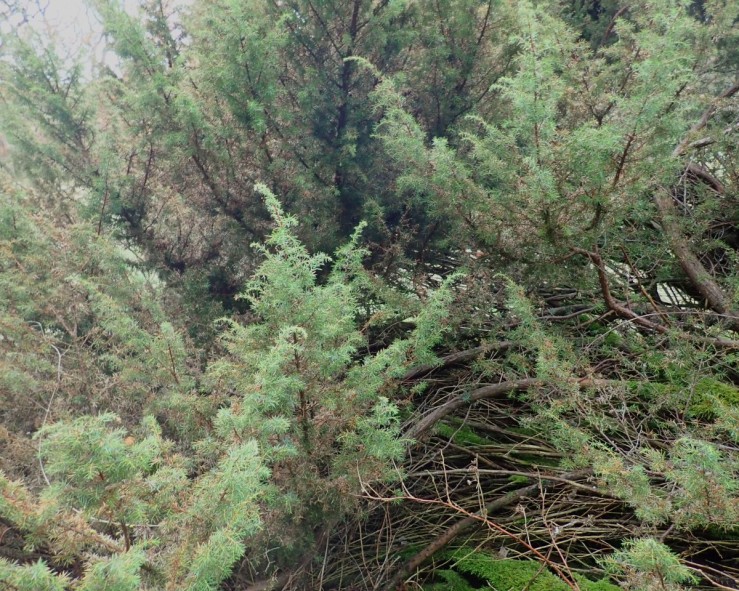
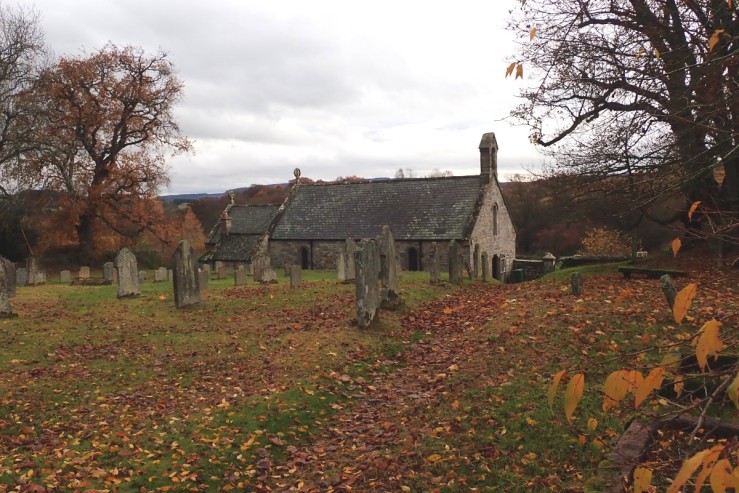
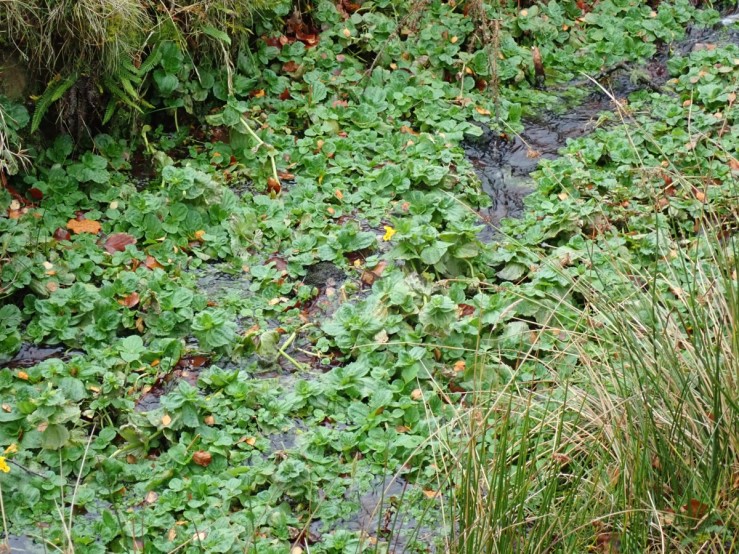
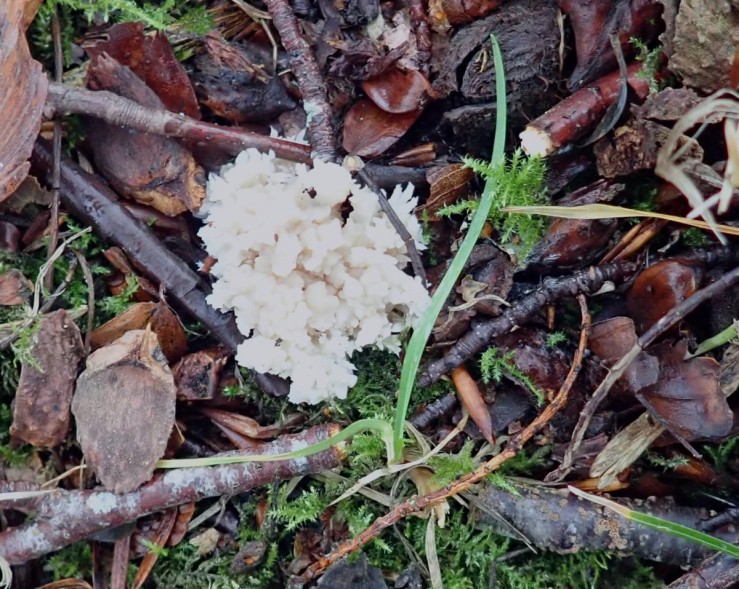
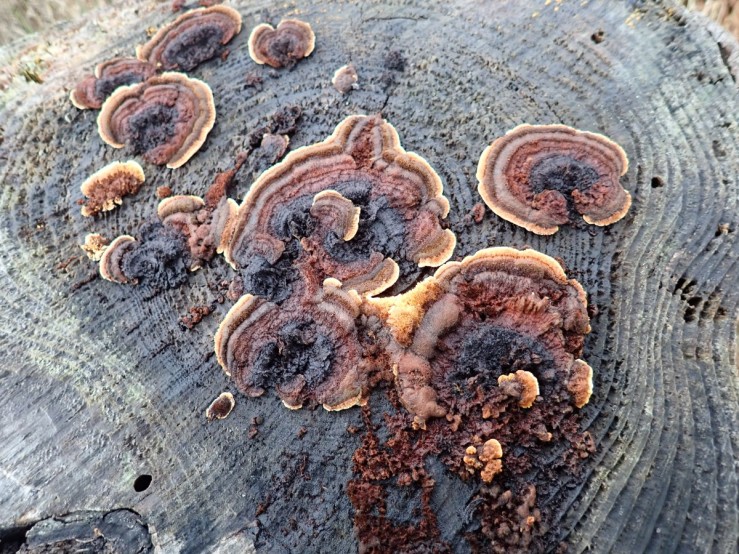
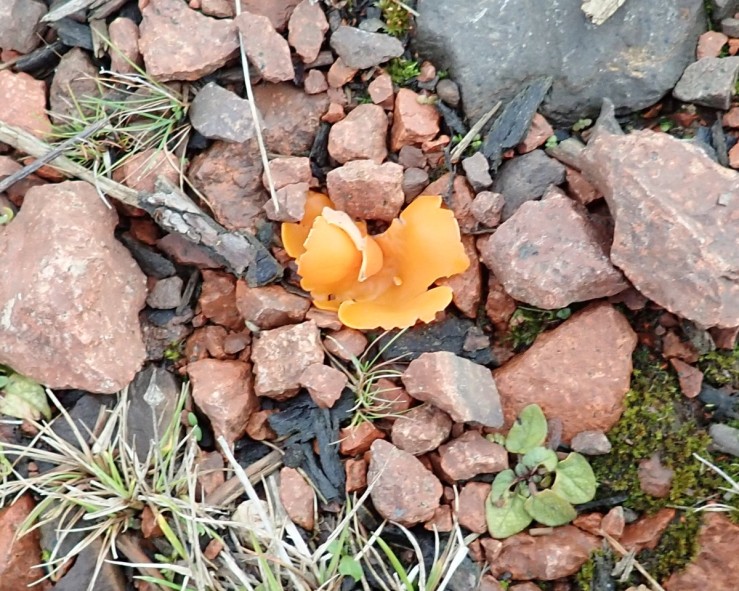
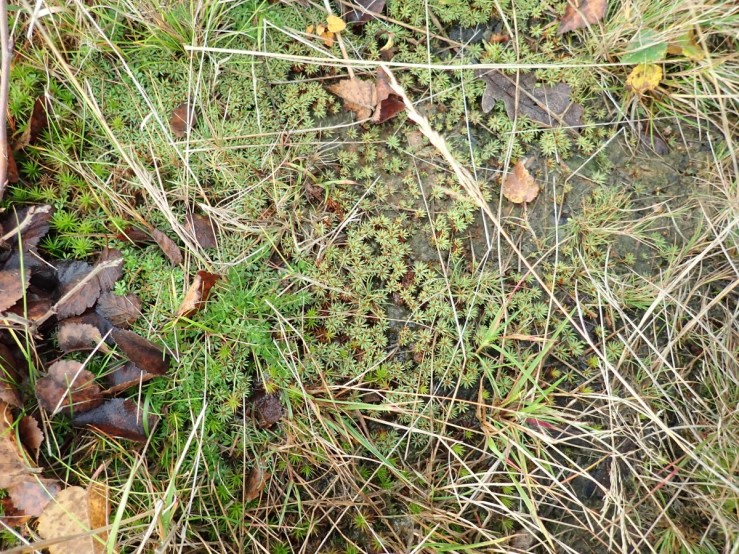
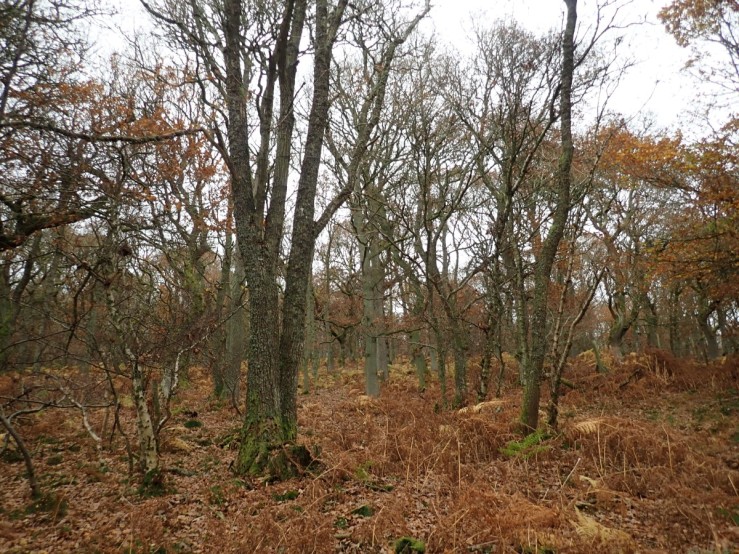
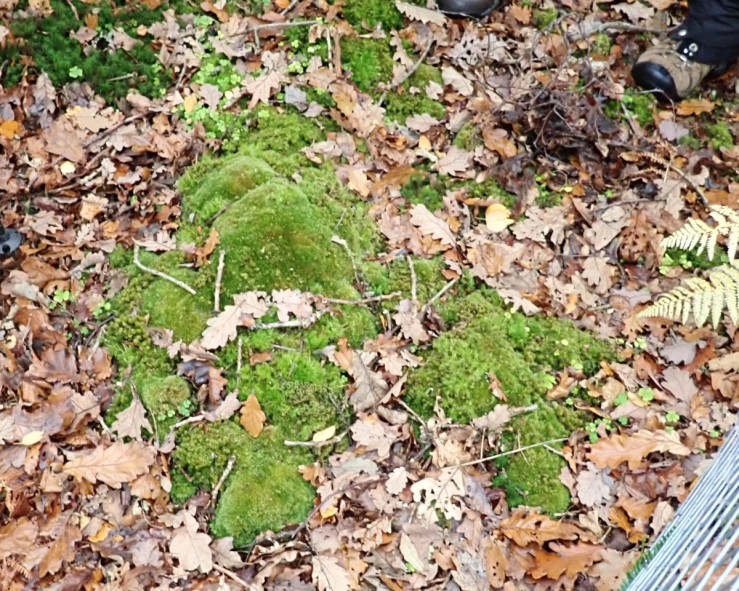
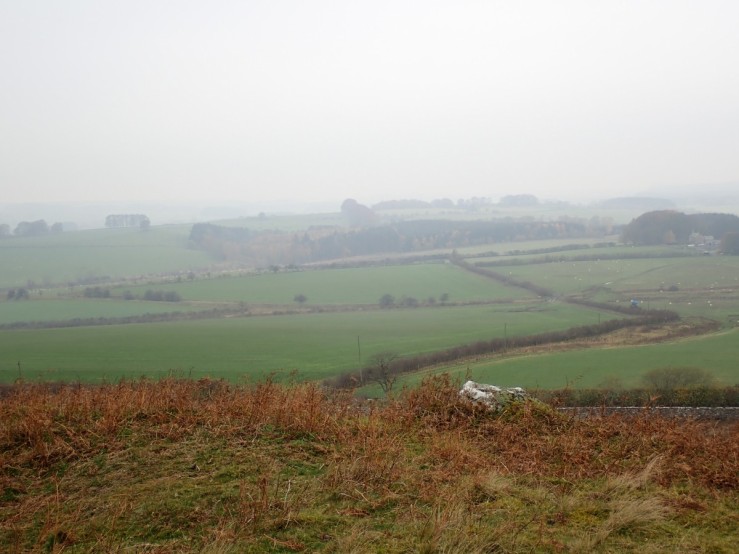
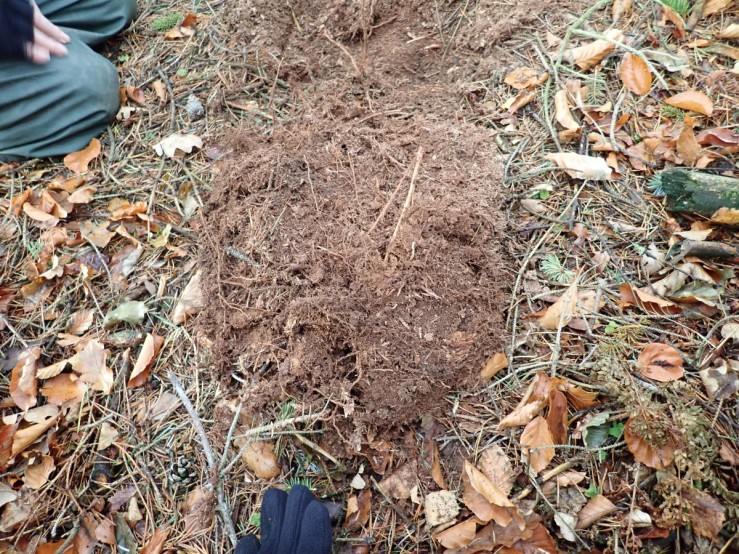
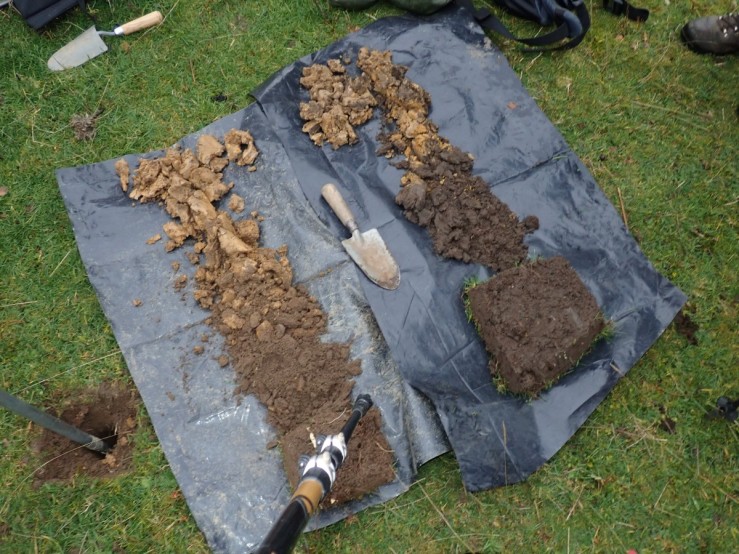
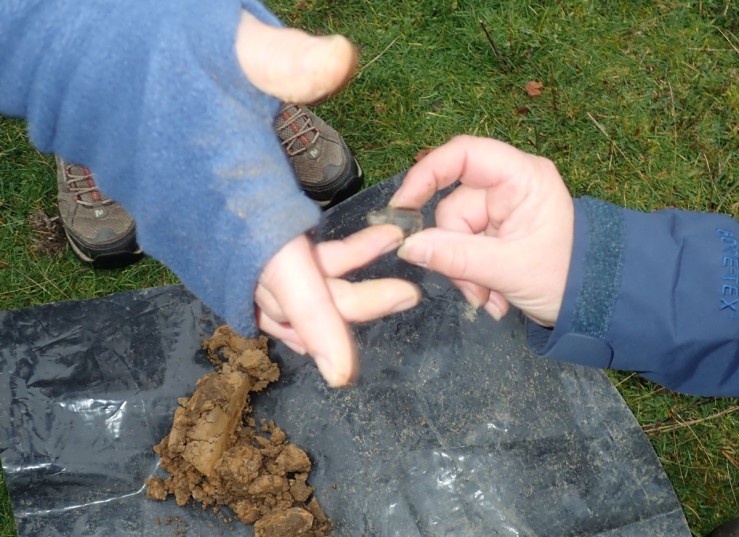
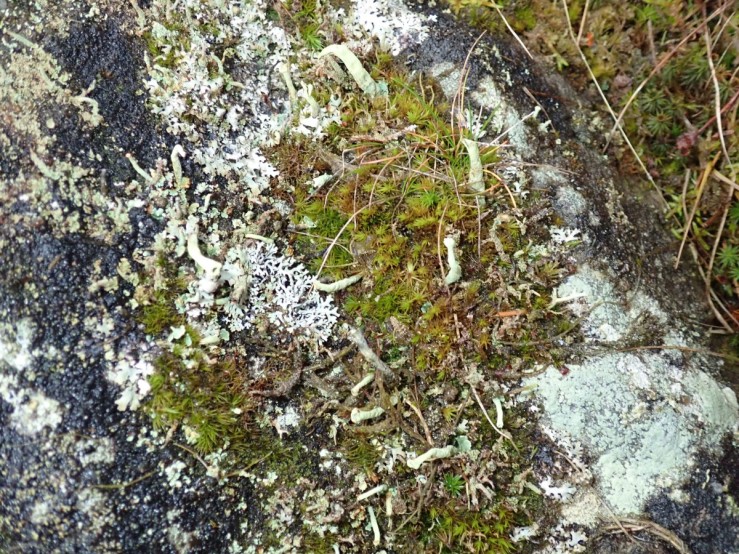
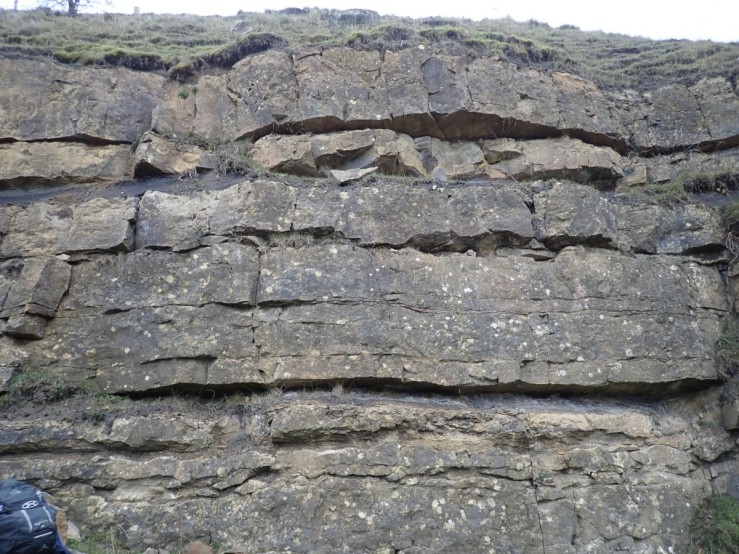
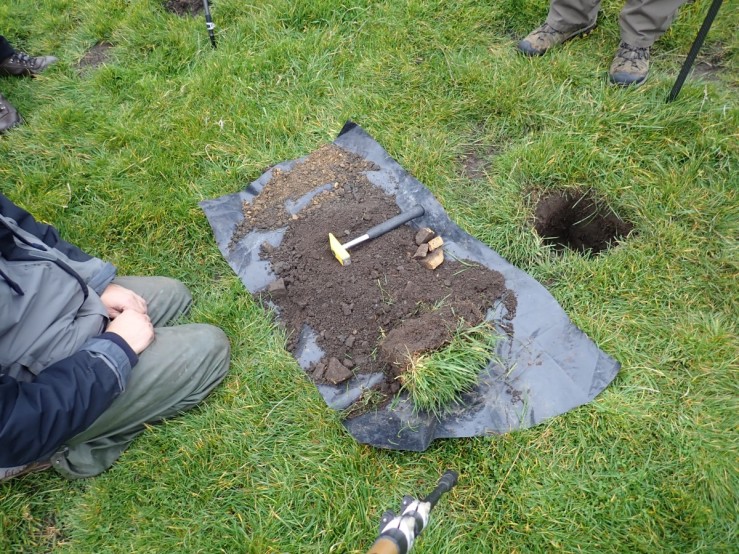
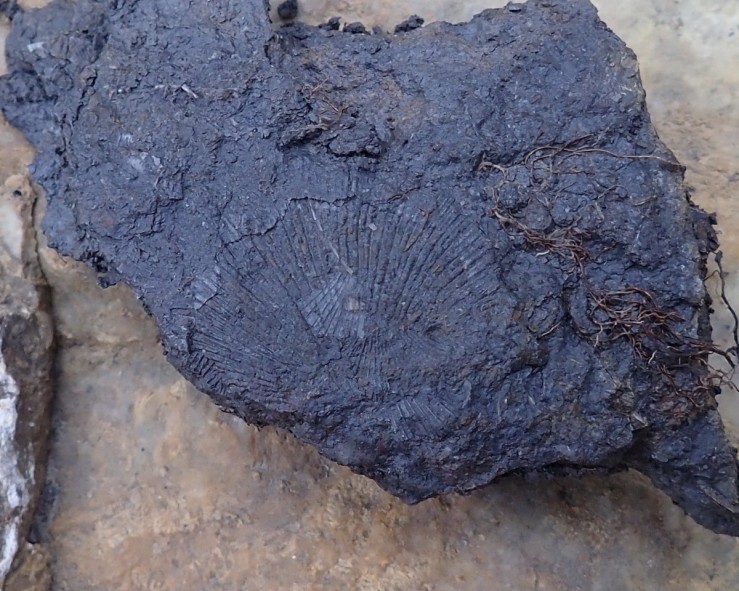
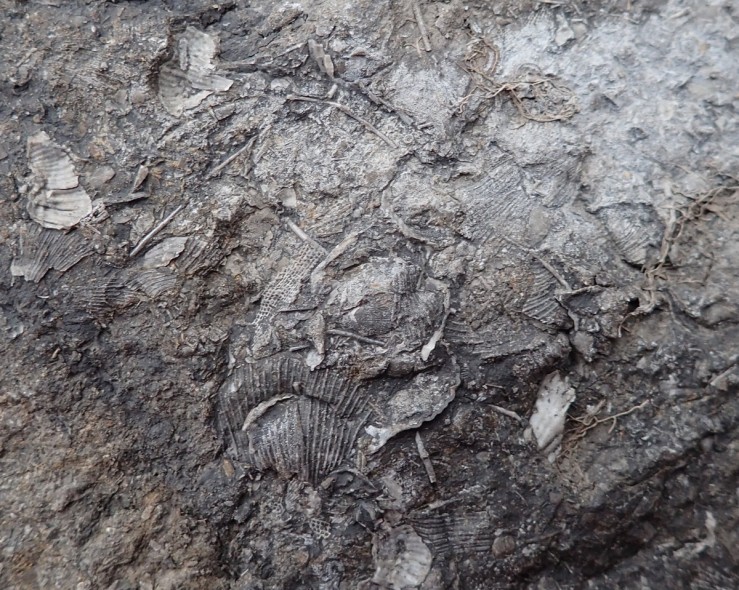
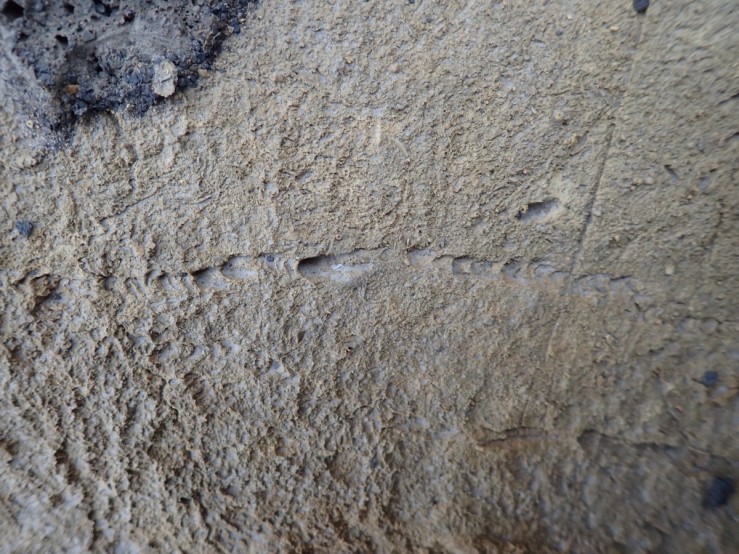
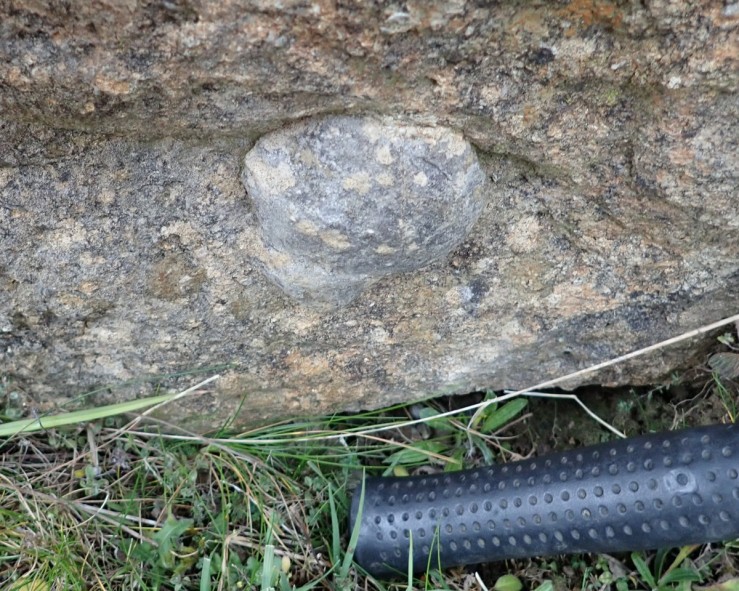
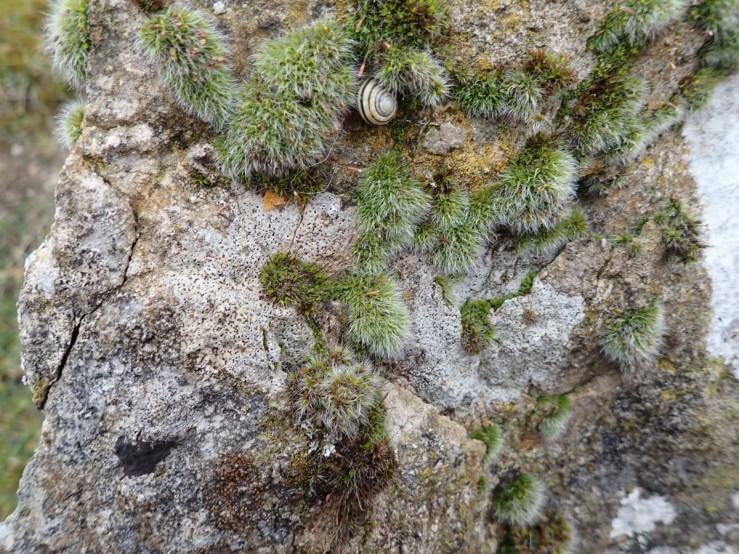
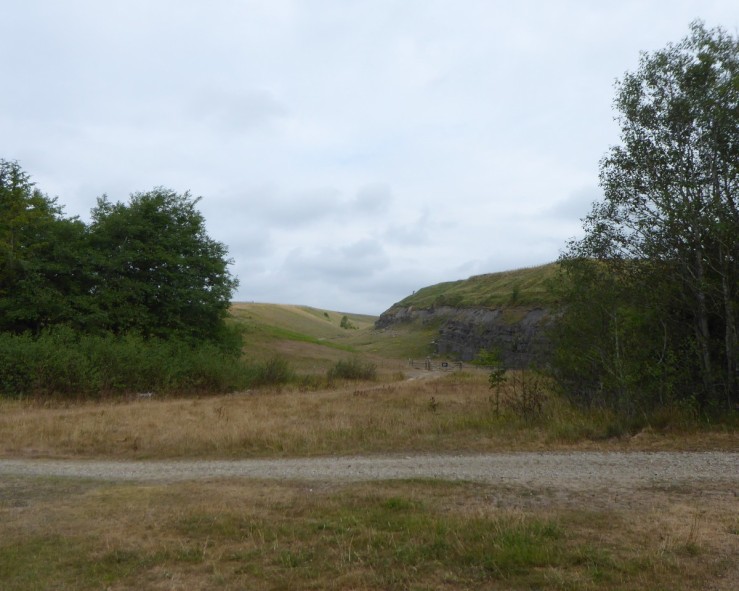
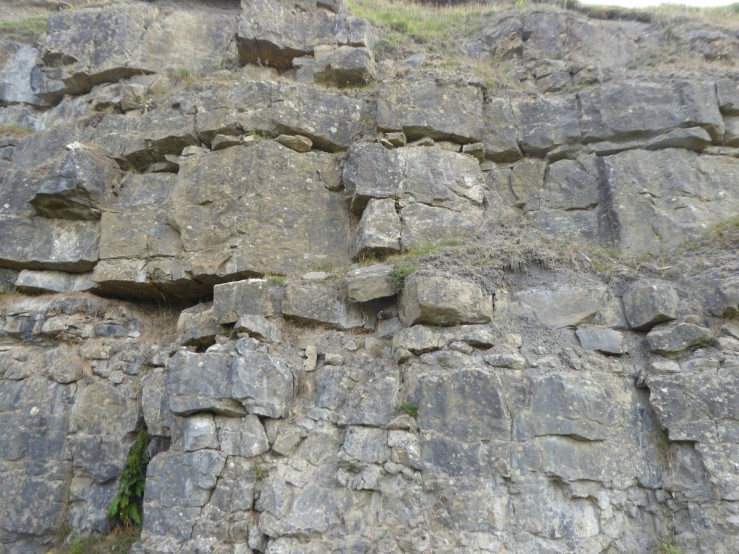
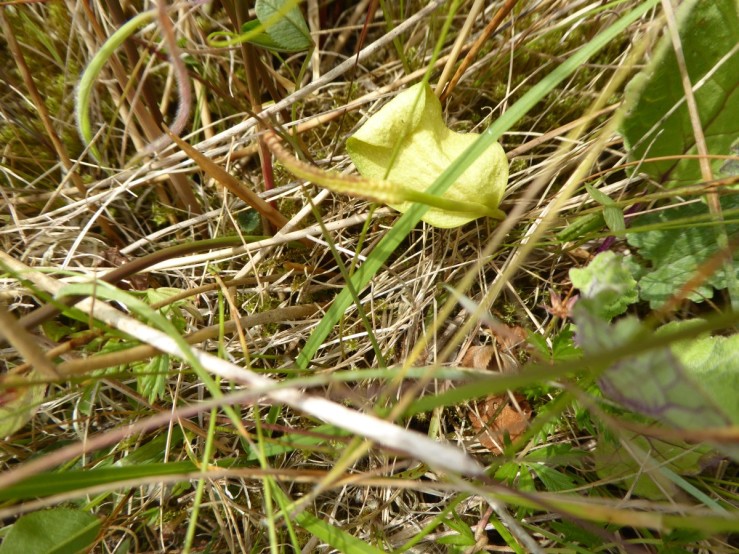
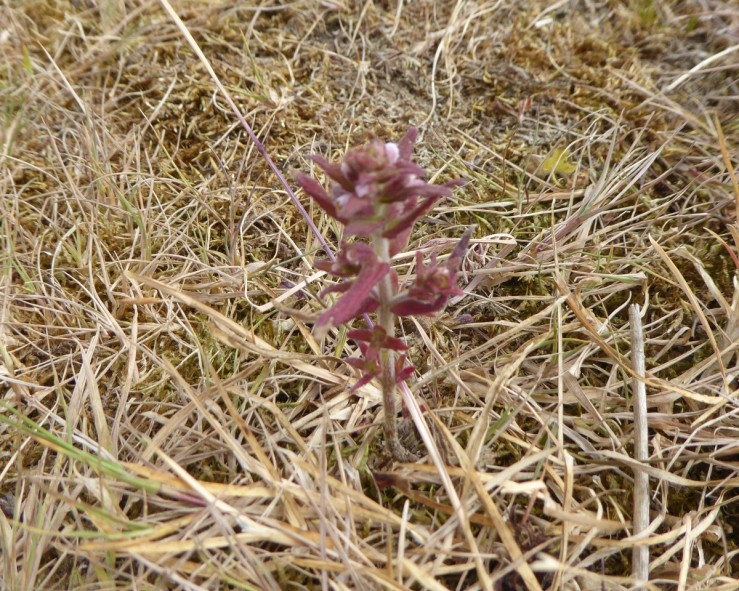
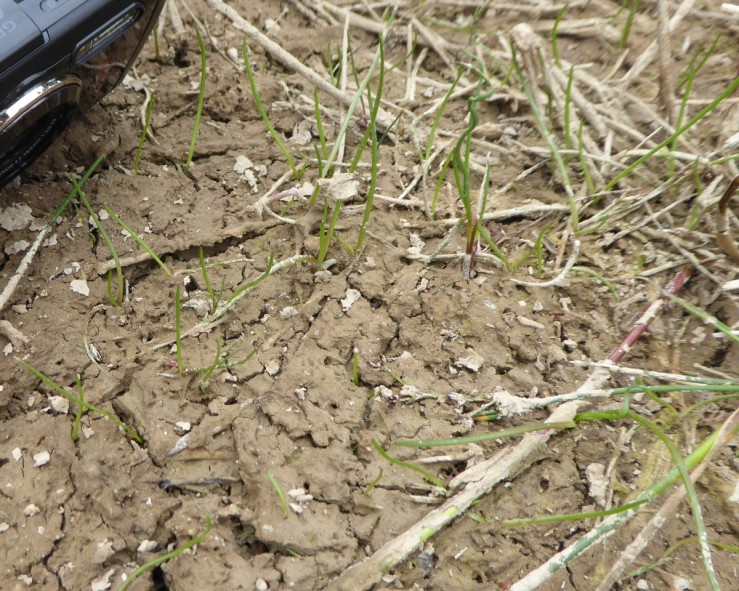
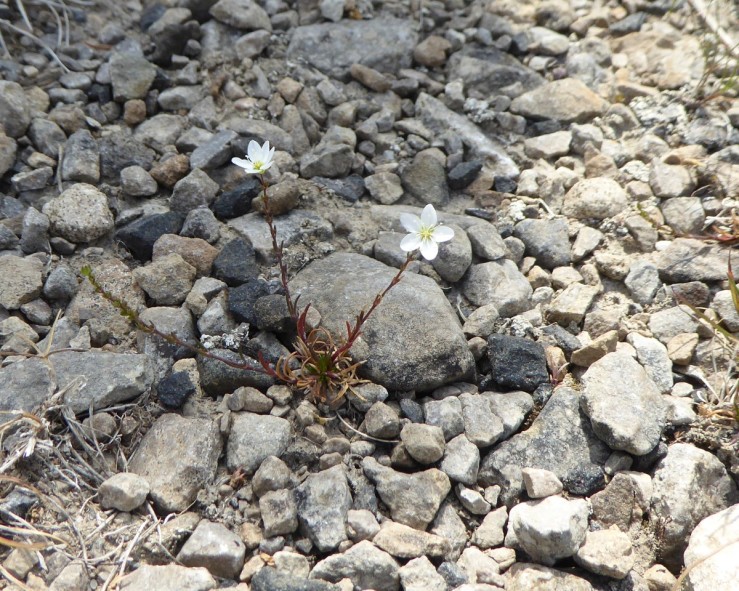
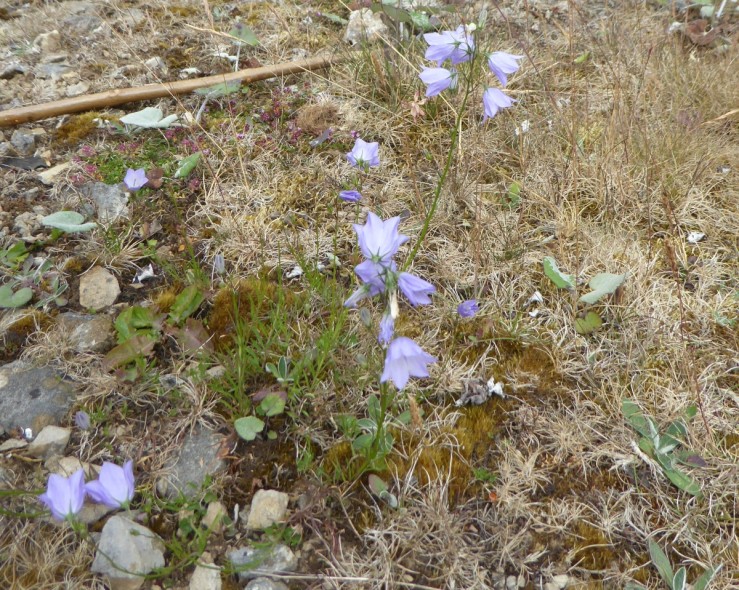
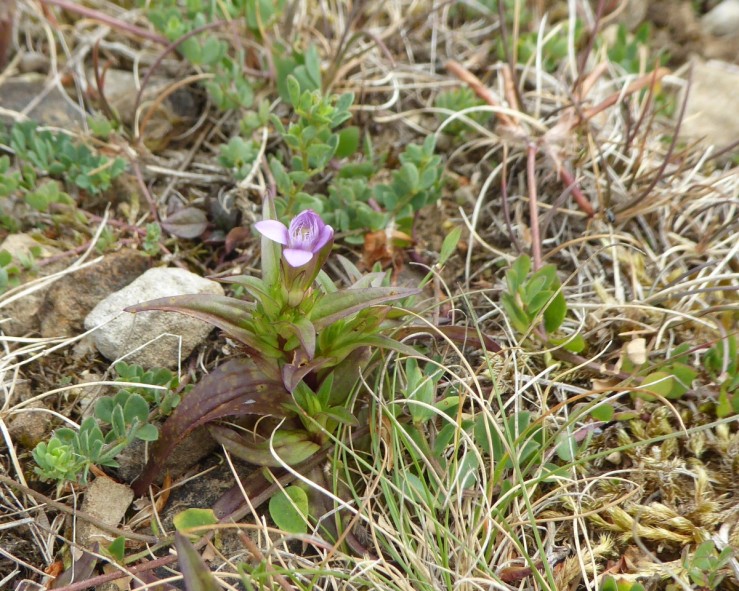
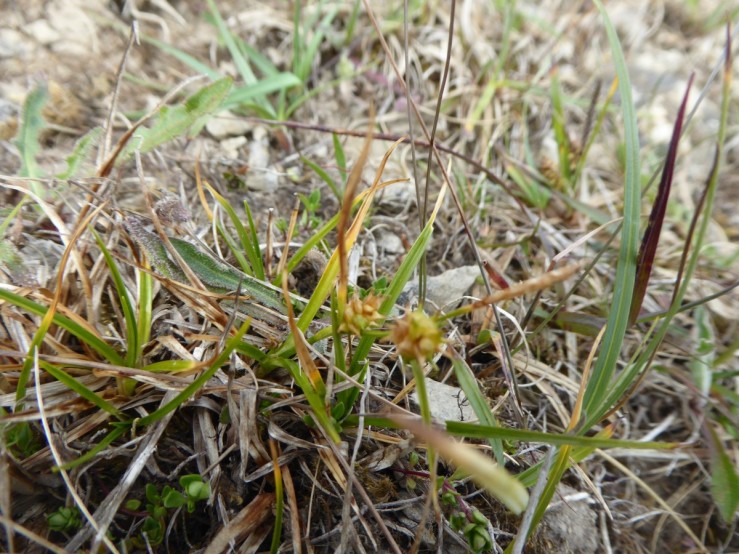
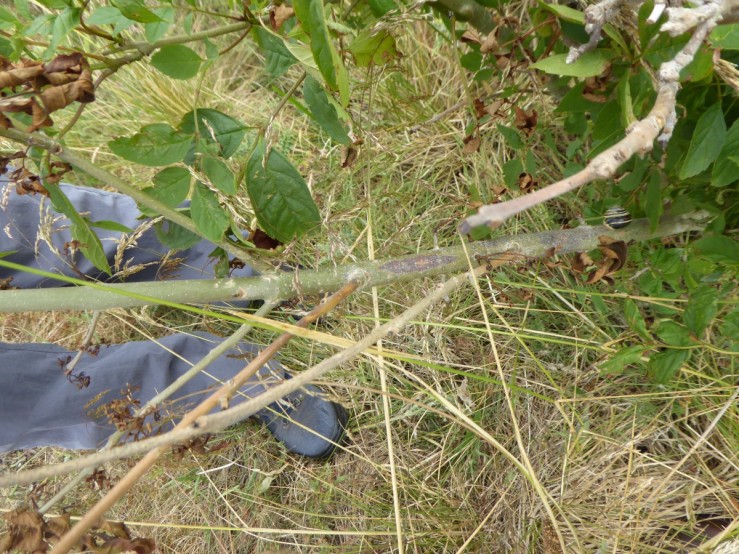

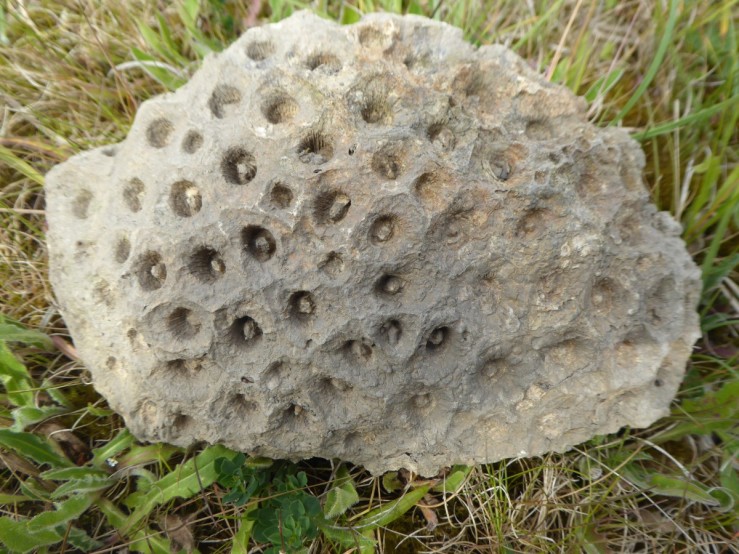
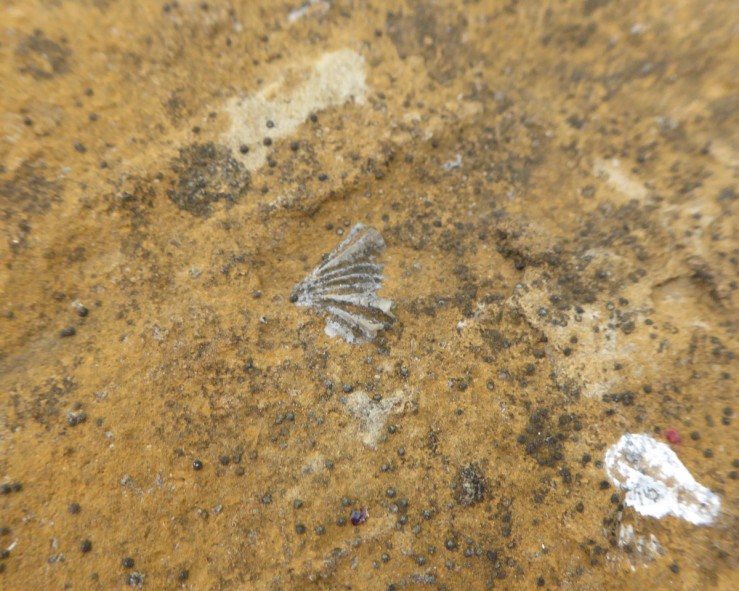
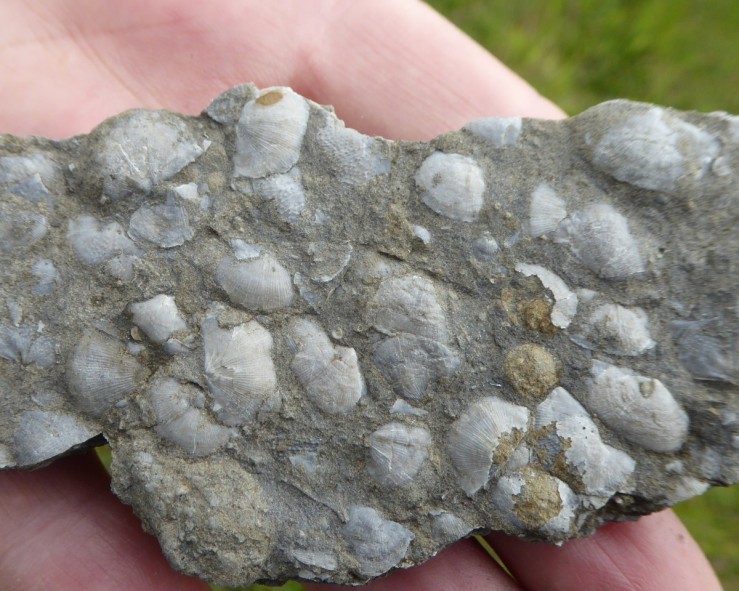
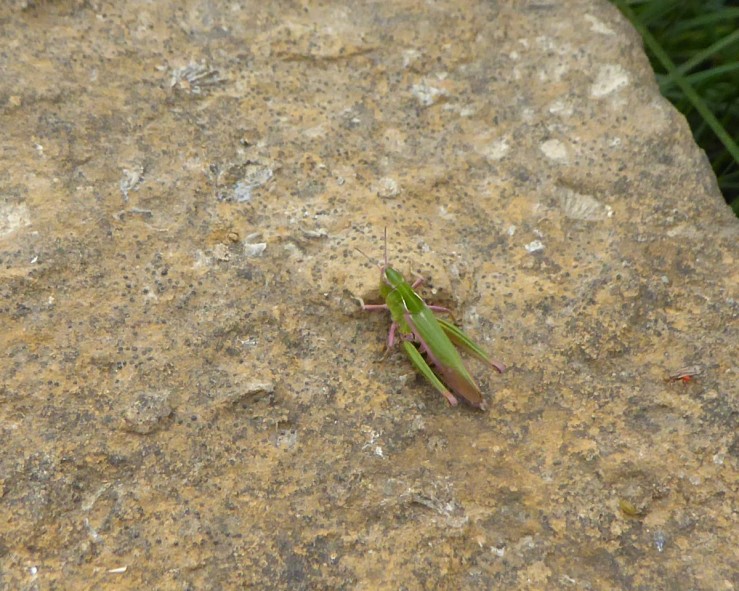
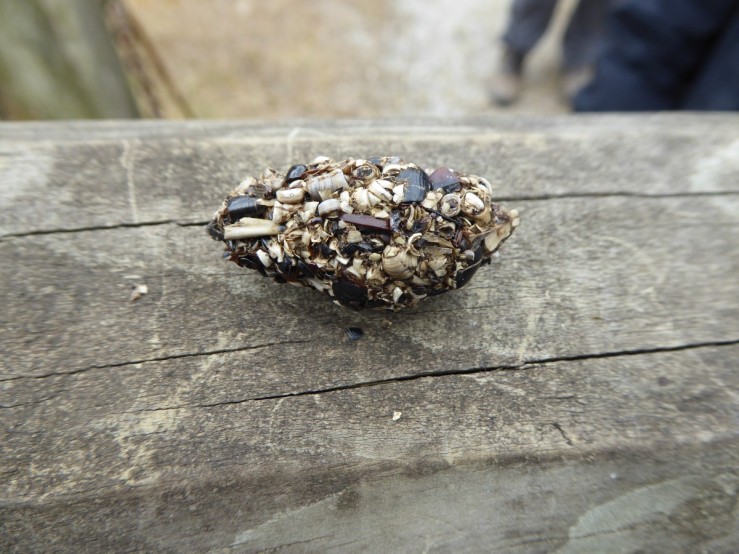
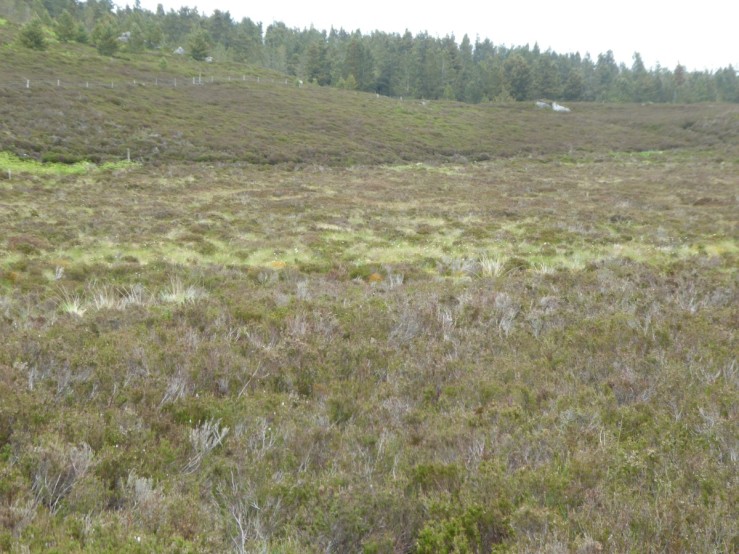
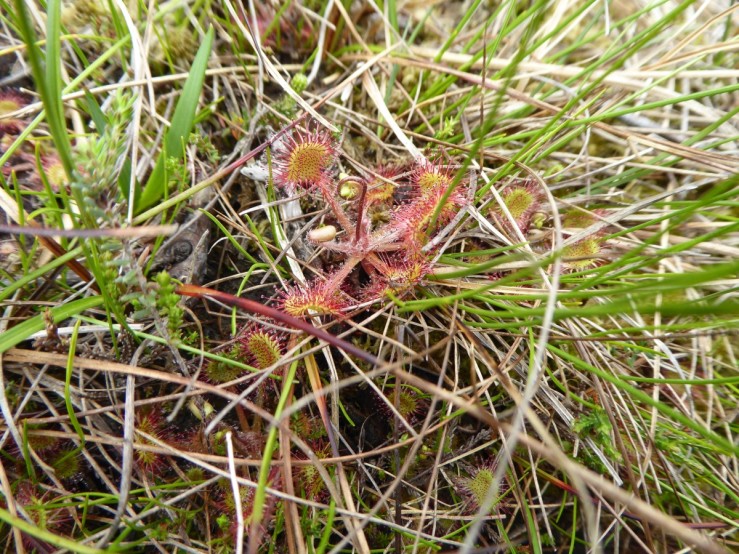
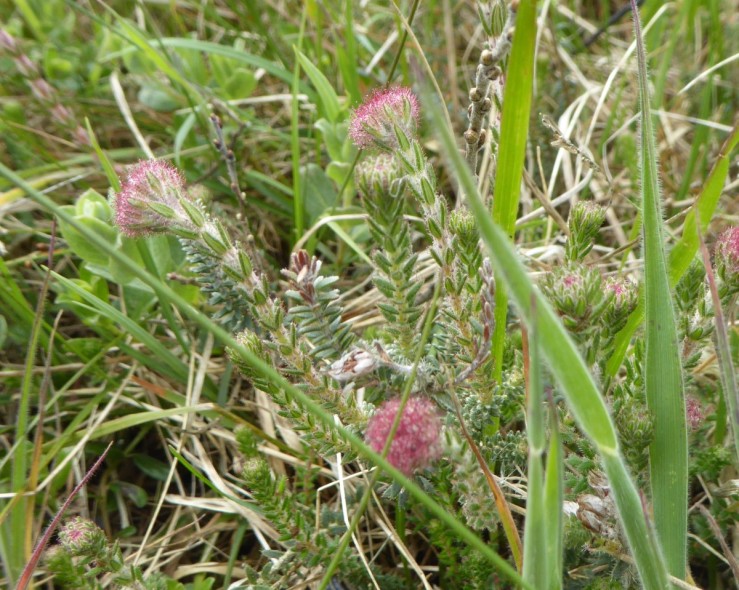
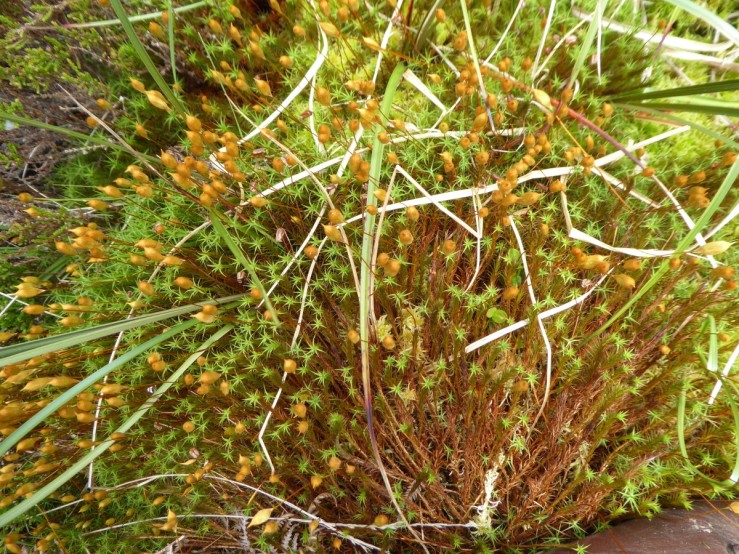
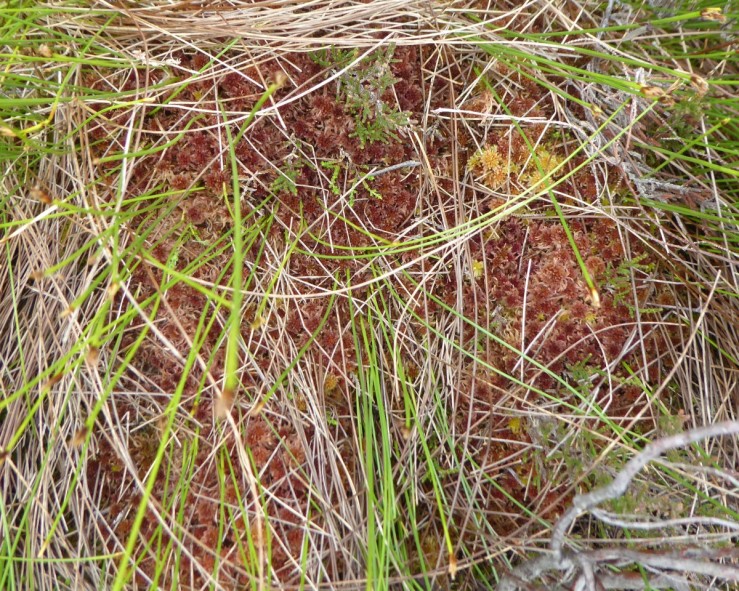
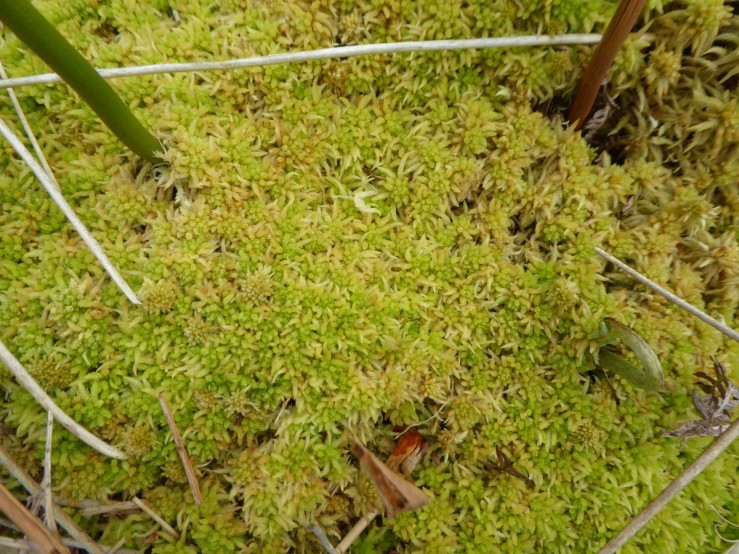
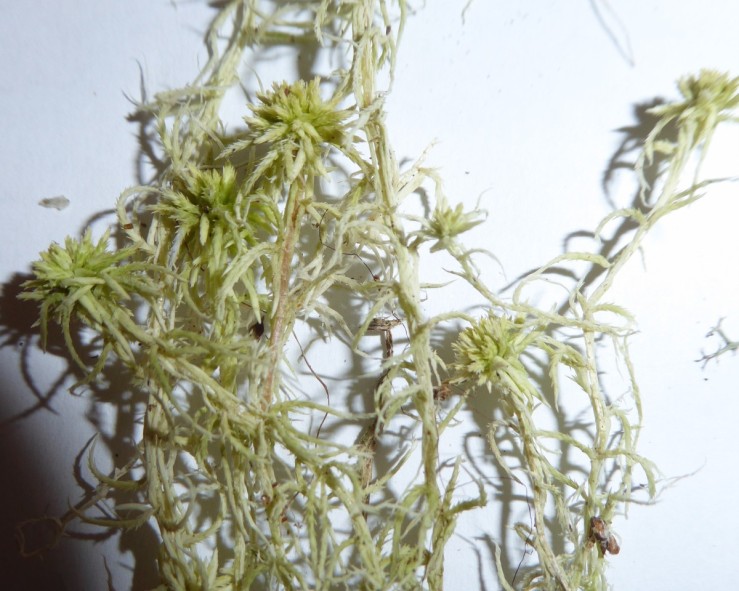
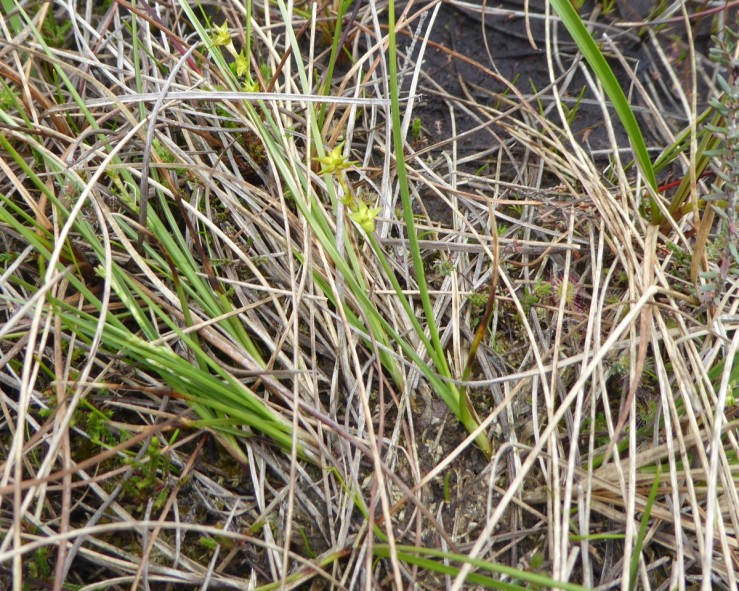
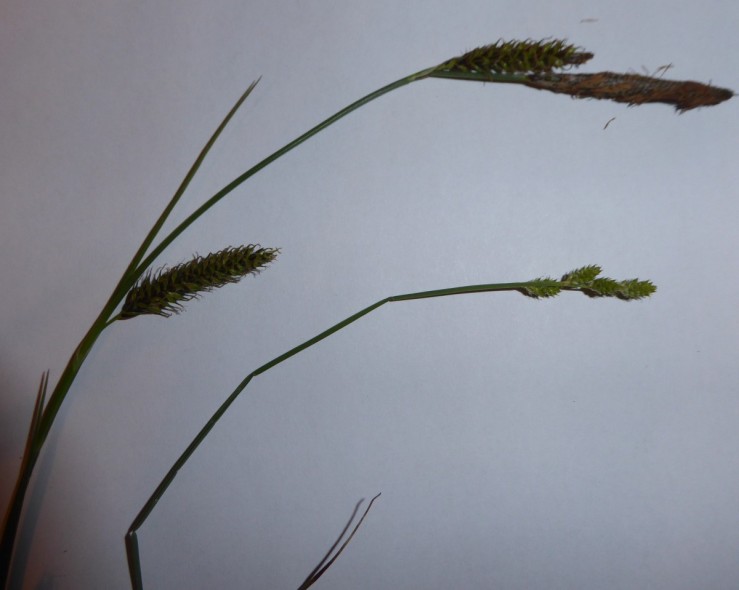
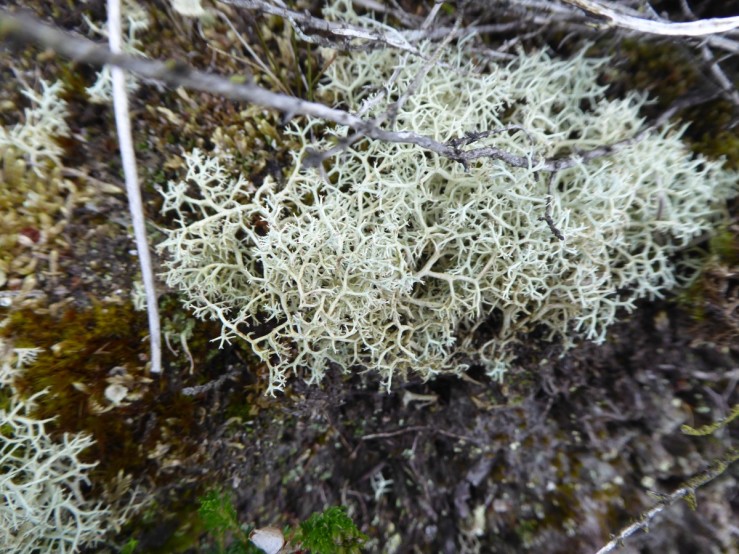
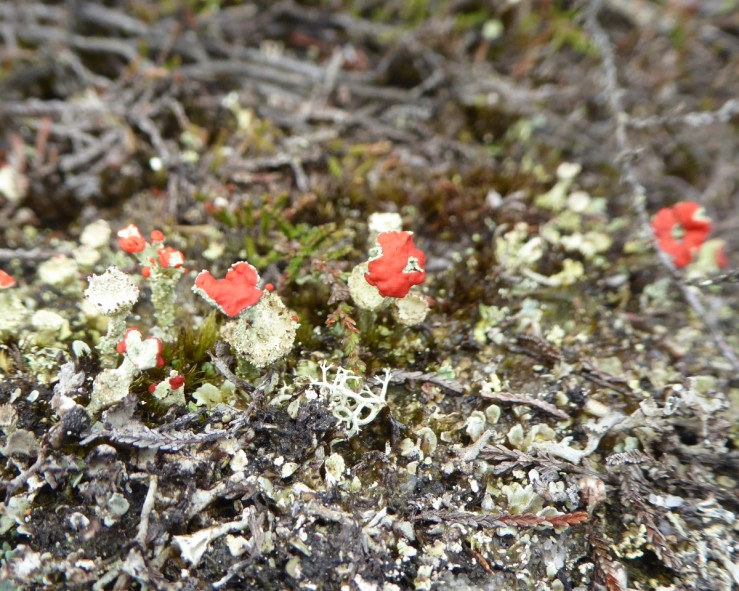
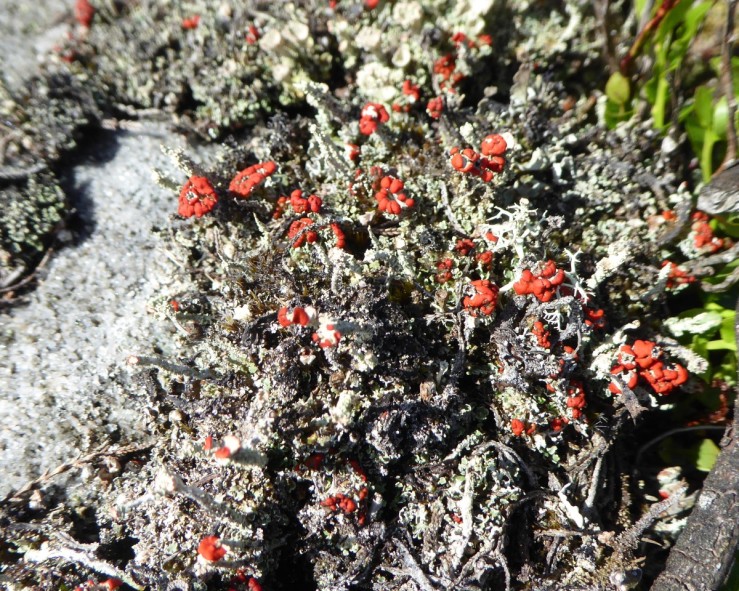
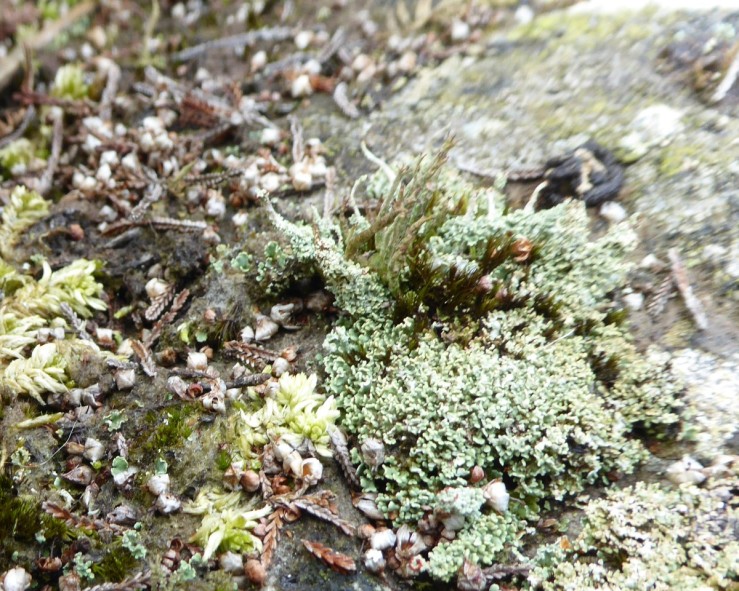
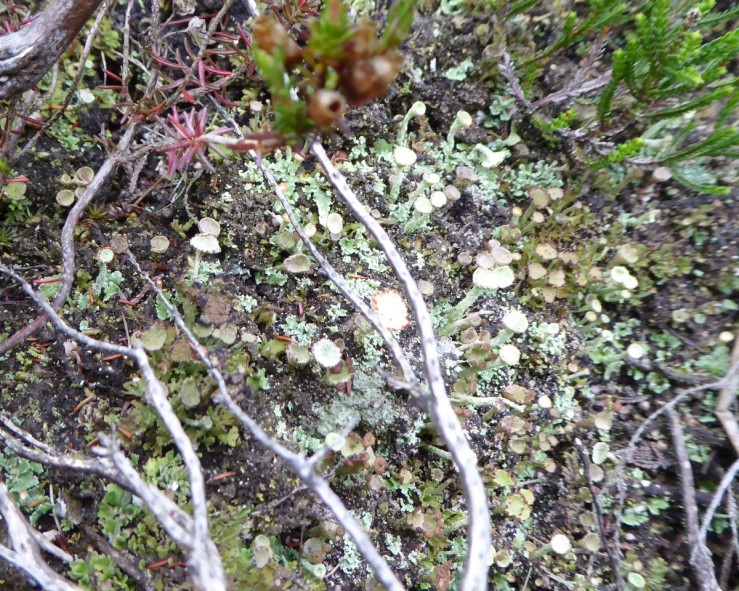
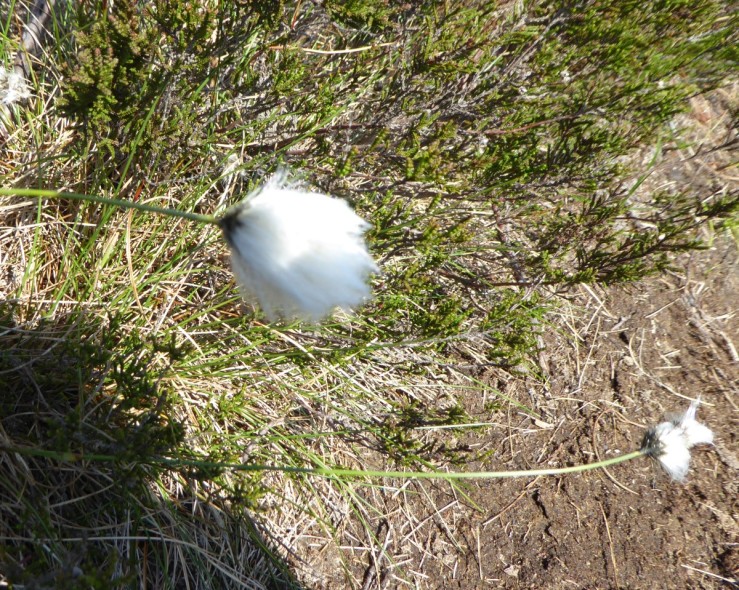
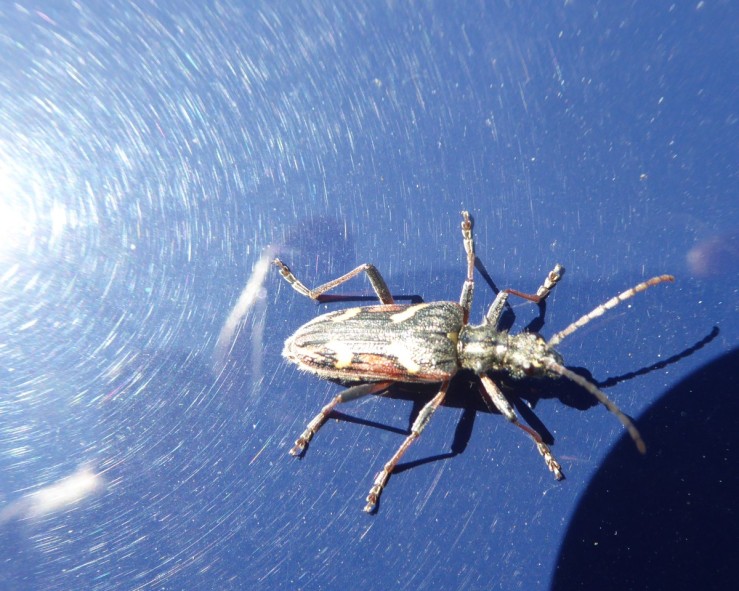
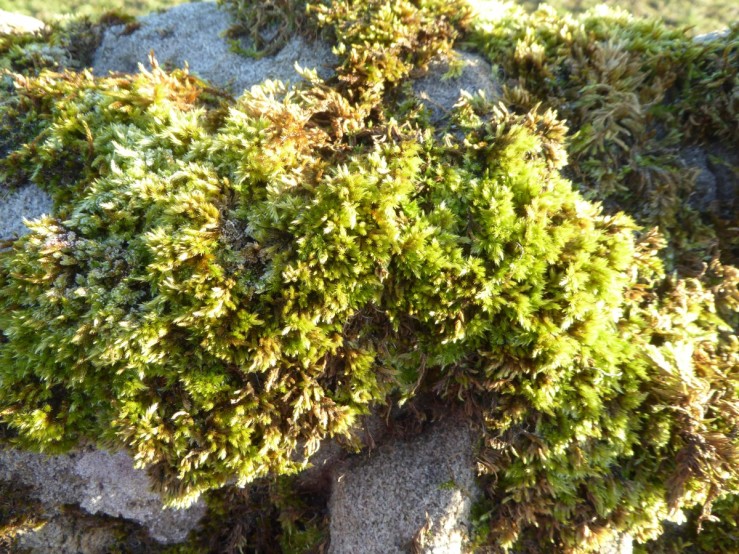
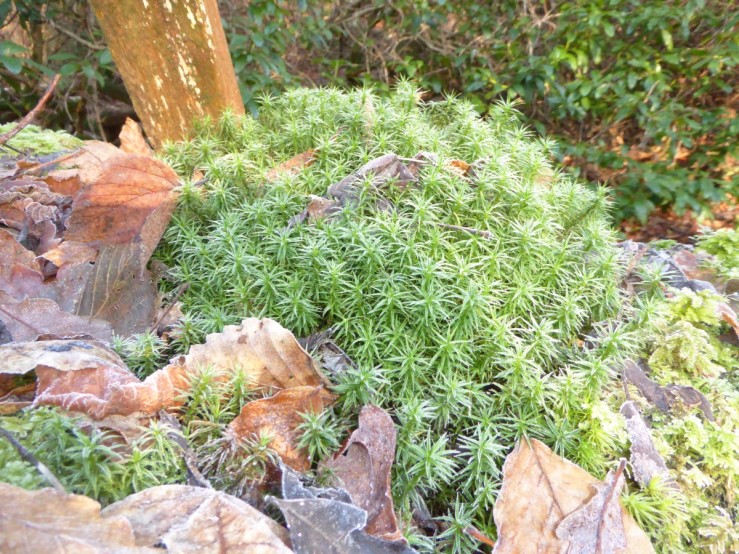

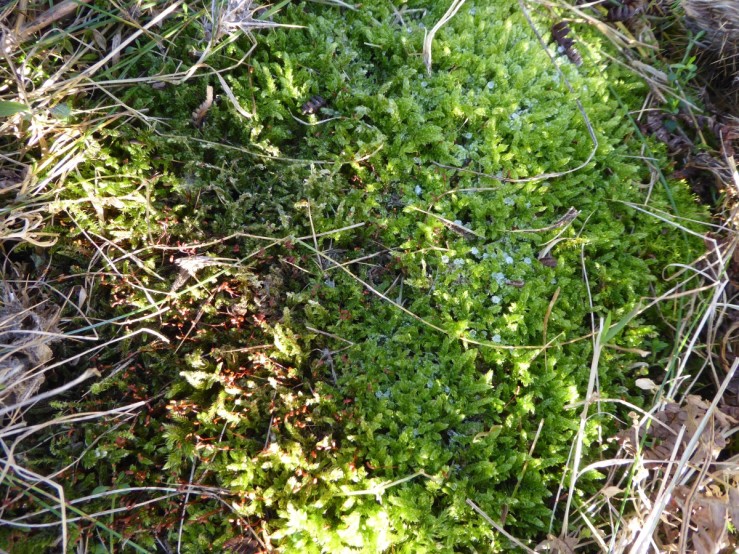
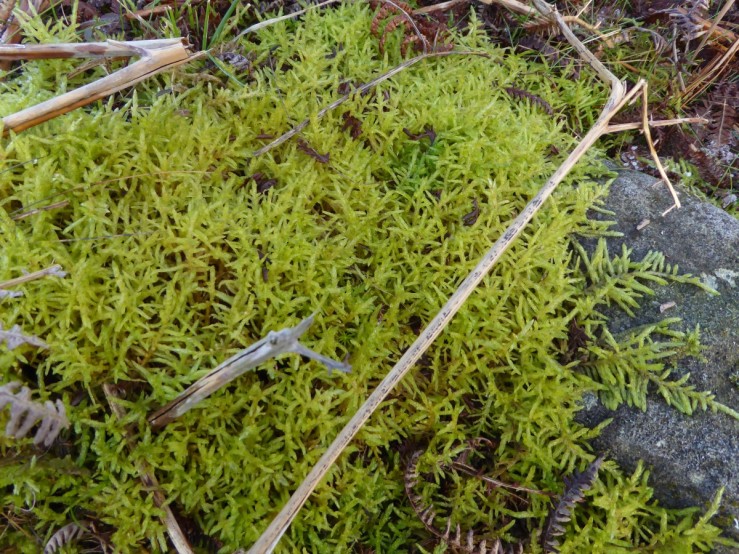
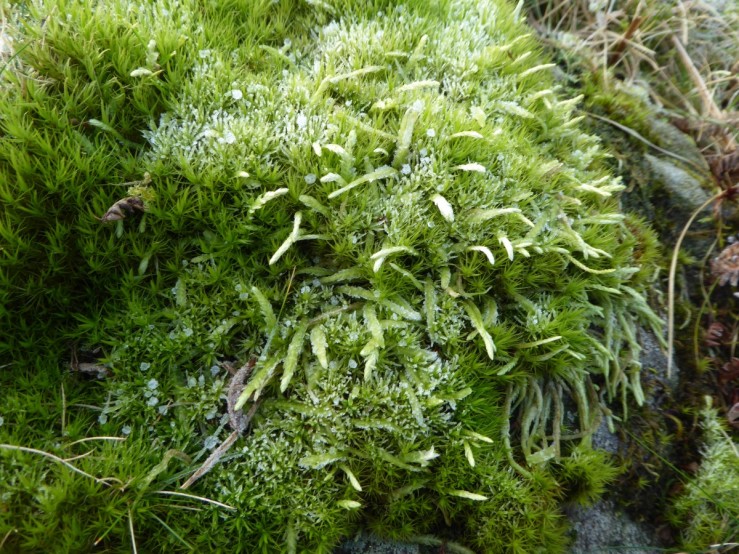
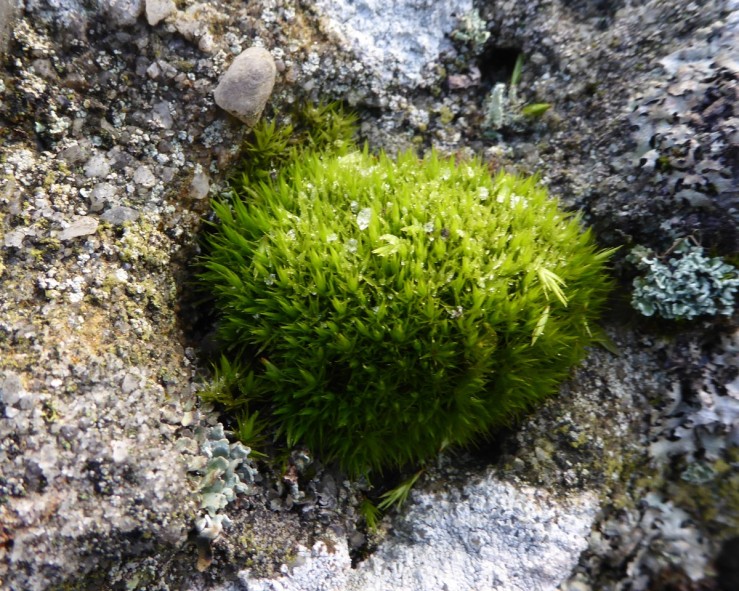
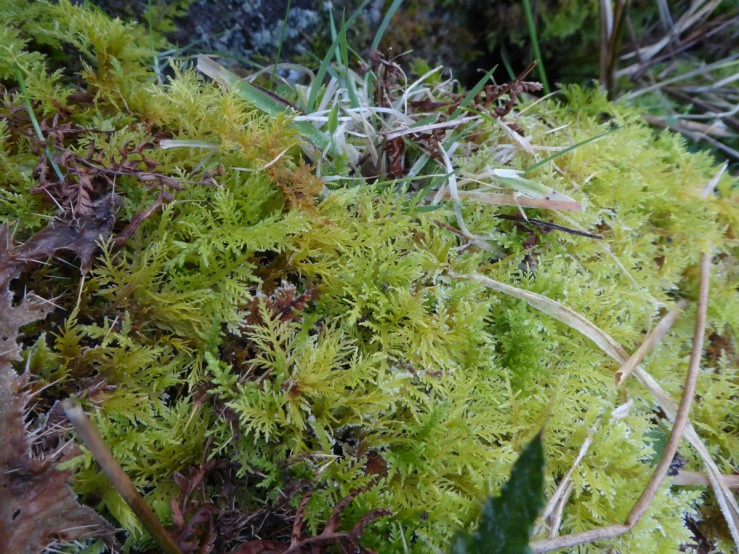
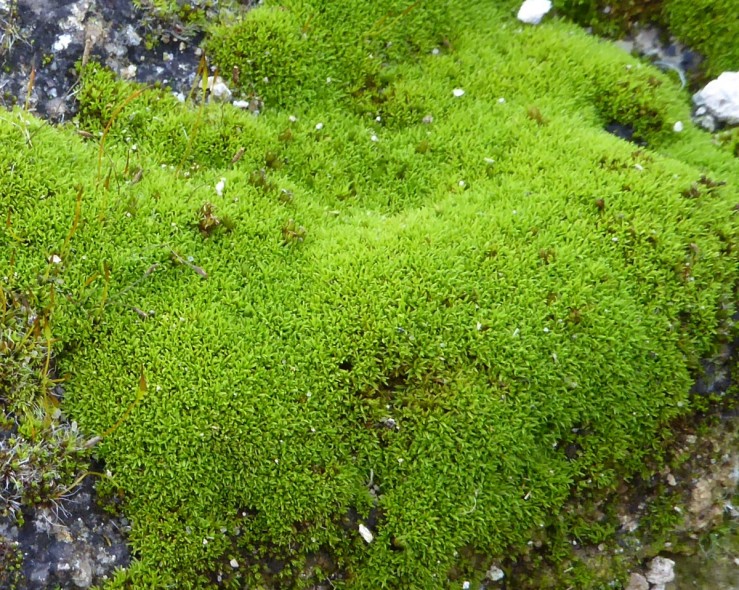
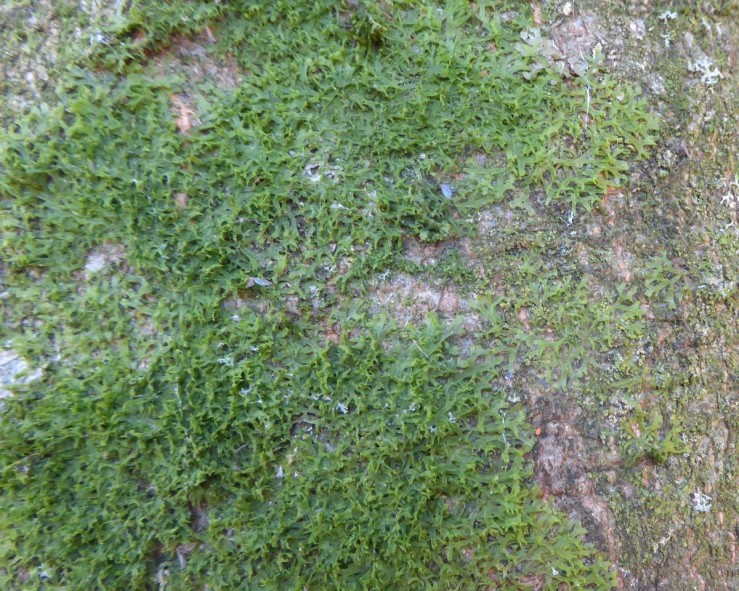
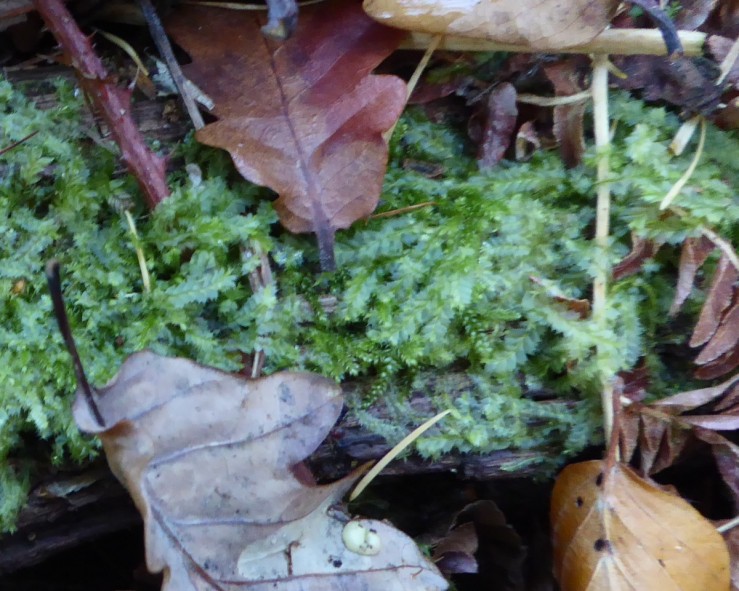
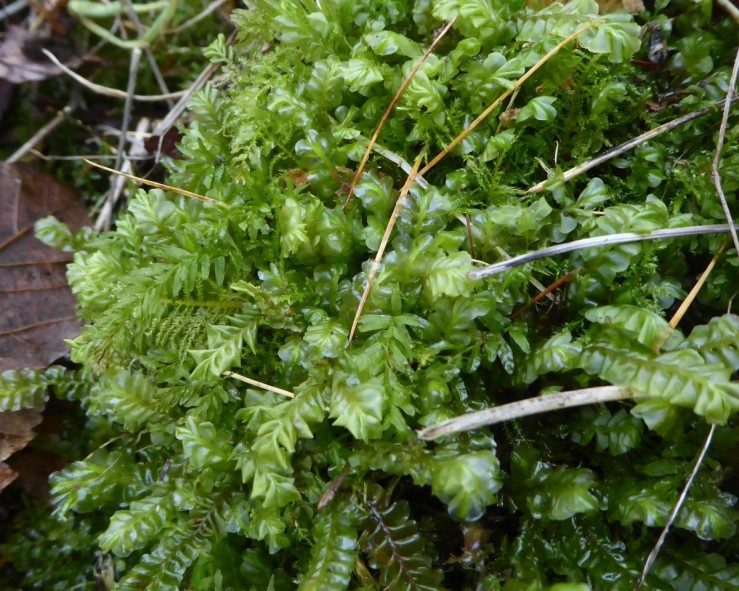
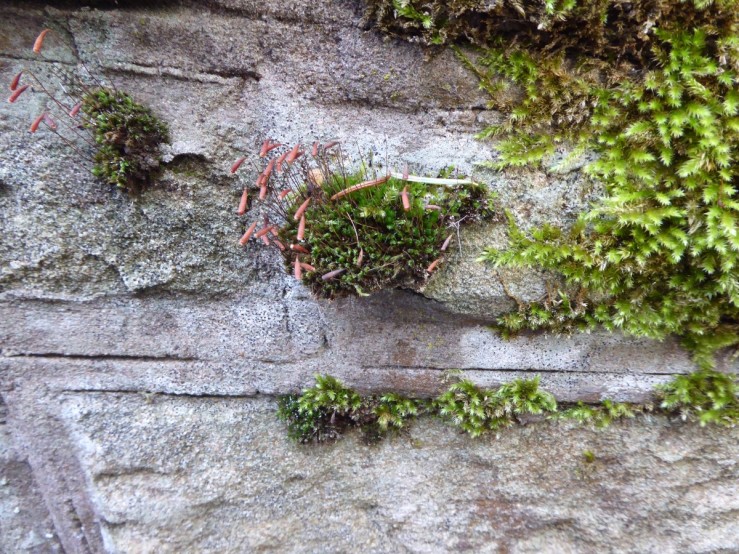
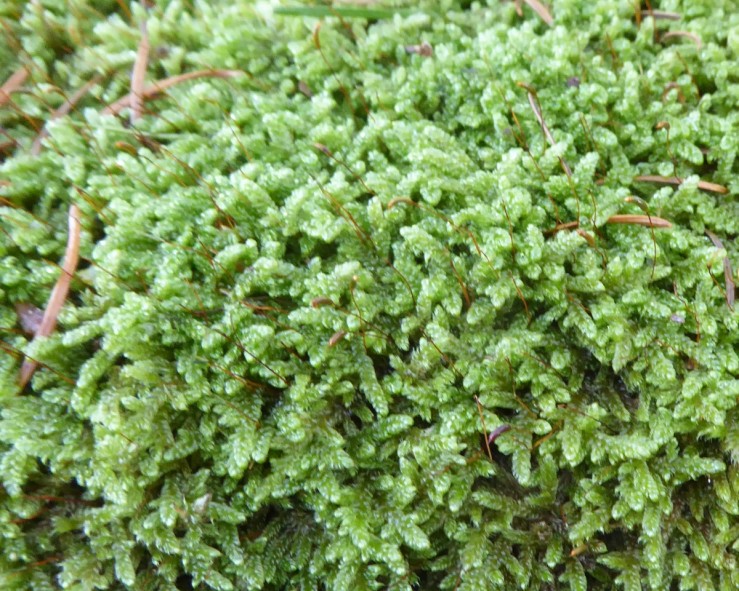
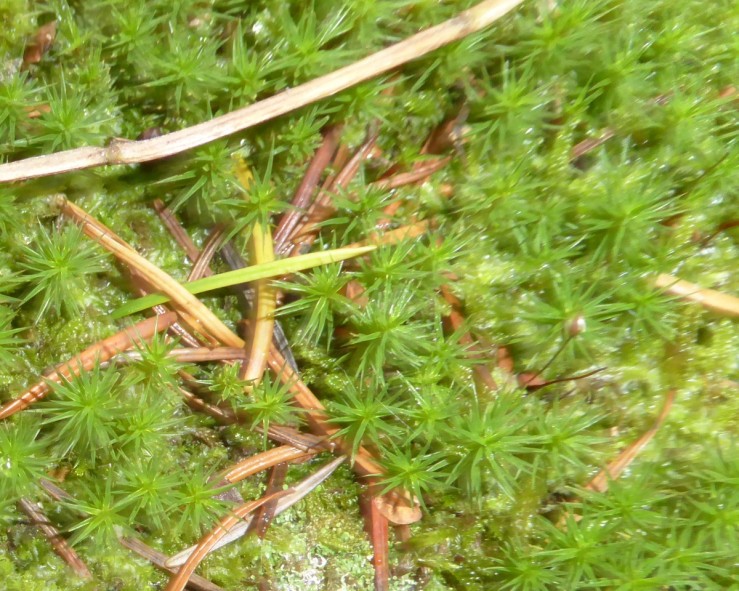
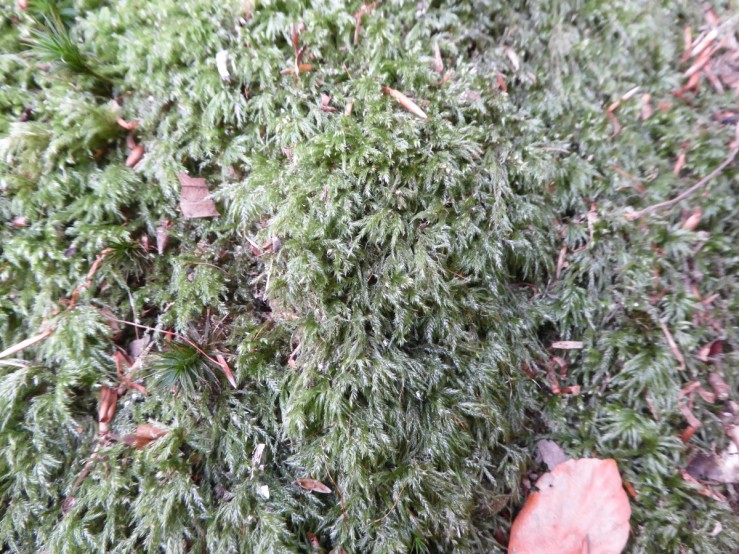 The picture below reveals how various mosses and lichens share living condition on a rock. The lichen is probably Peltigera membranacea; it is surrounded by numerous Bryophyte species. Big Shaggy Moss (Rhytidiadelphus triquetus) is the red stemmed one at the bottom of the picture,
The picture below reveals how various mosses and lichens share living condition on a rock. The lichen is probably Peltigera membranacea; it is surrounded by numerous Bryophyte species. Big Shaggy Moss (Rhytidiadelphus triquetus) is the red stemmed one at the bottom of the picture, 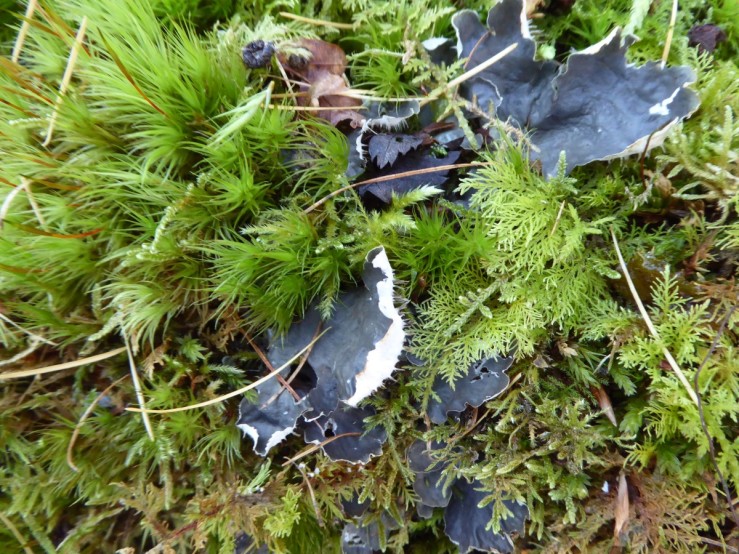
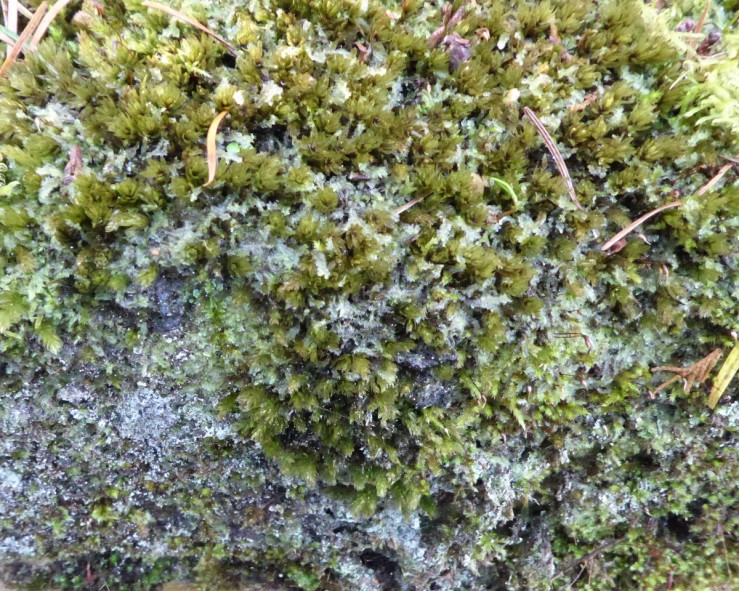
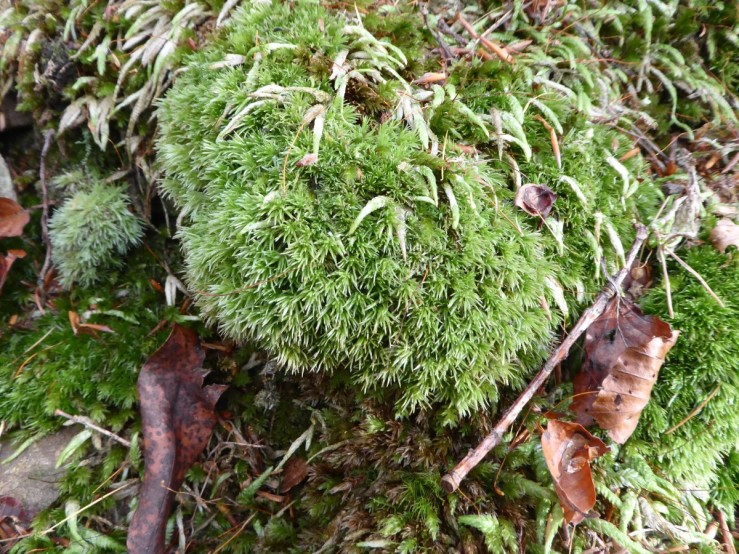
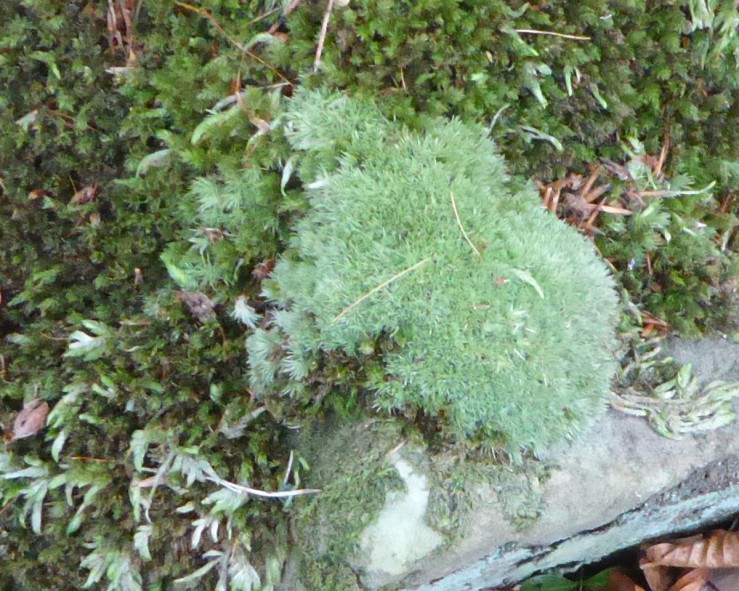
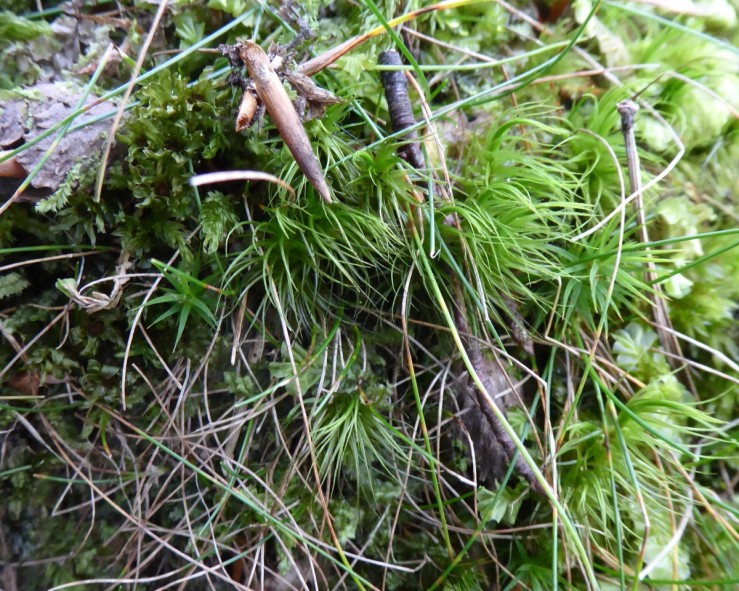
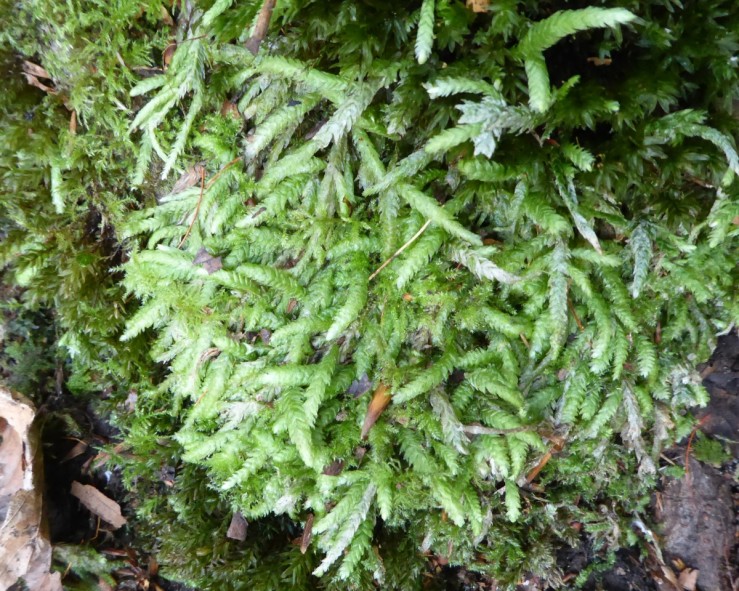

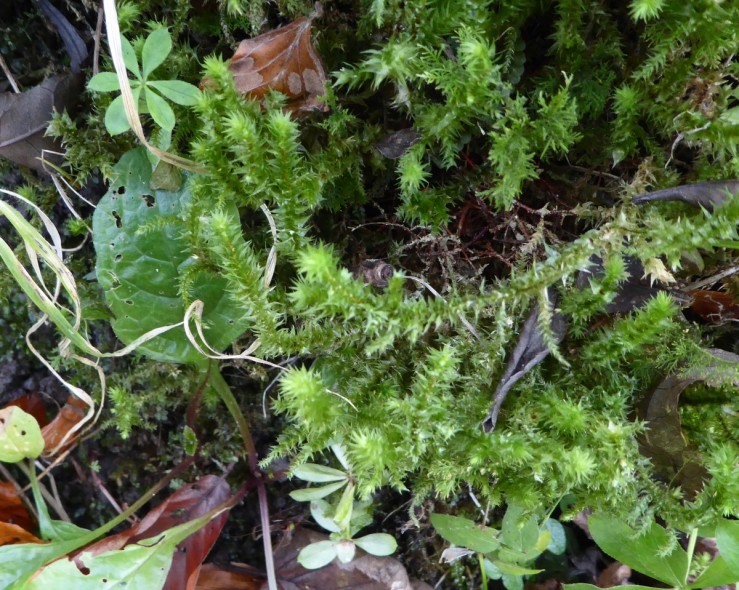
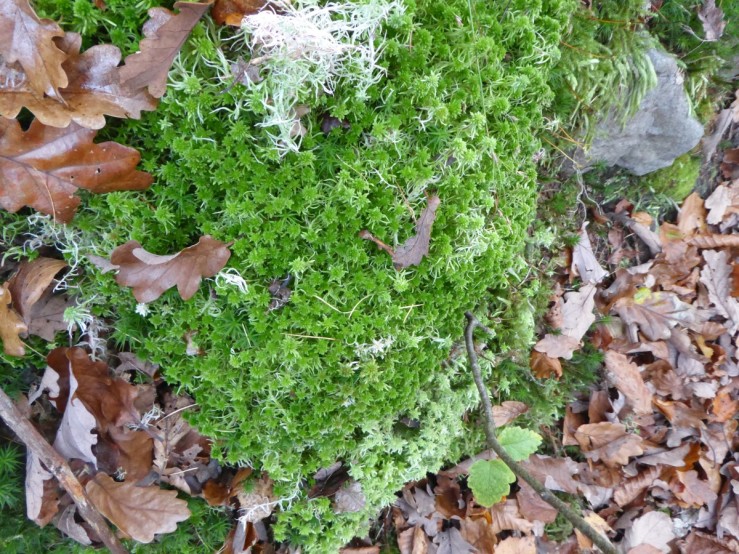
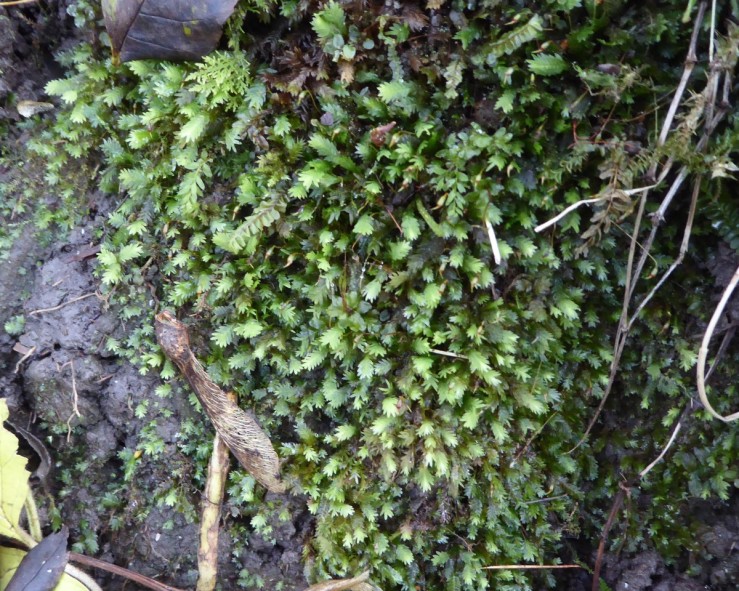

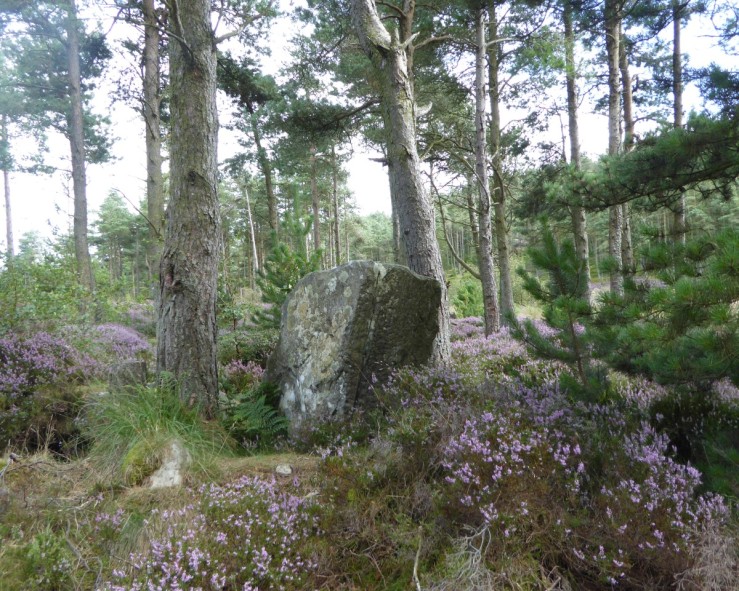
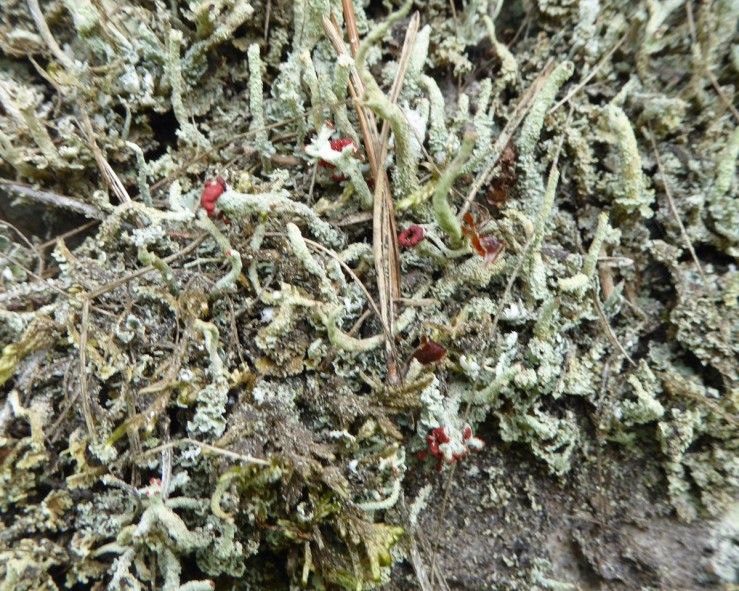
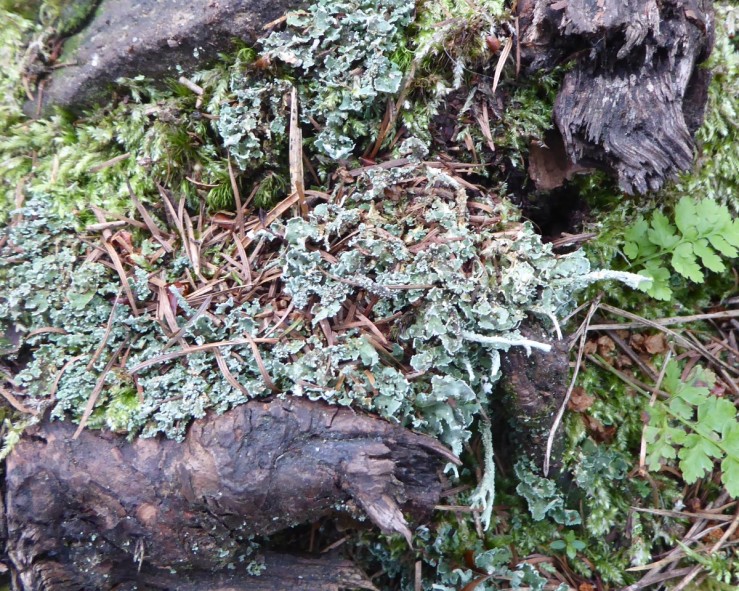
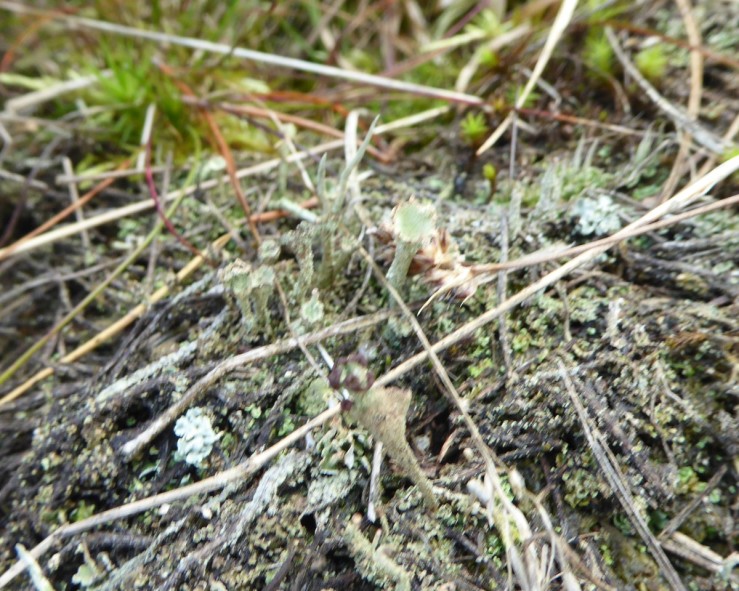

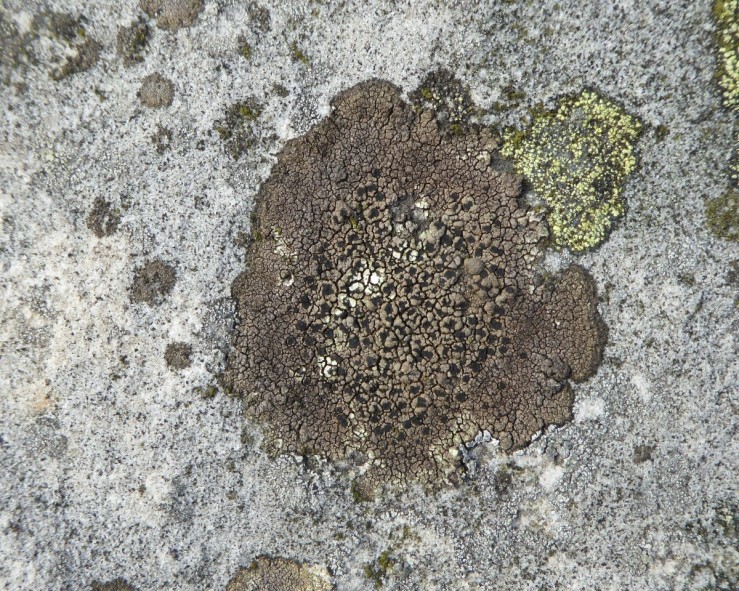
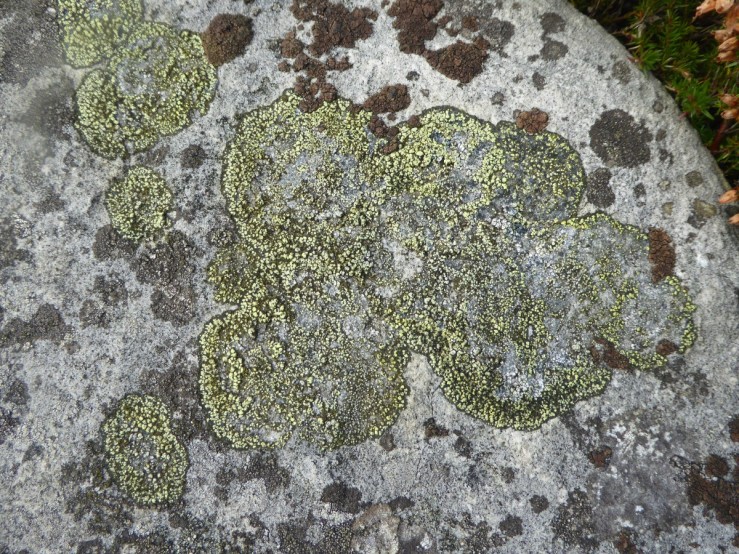
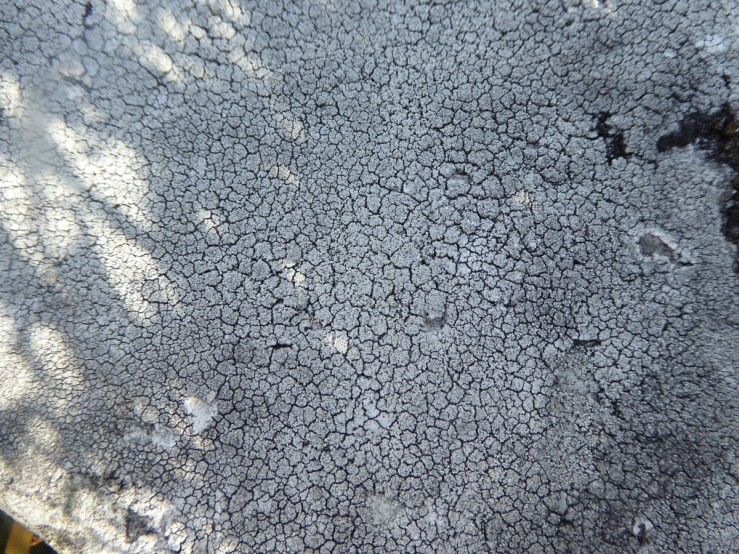
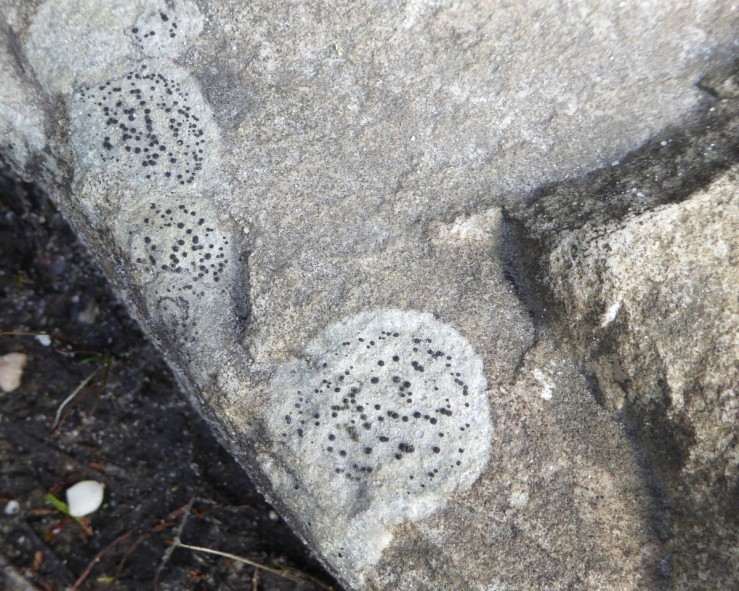
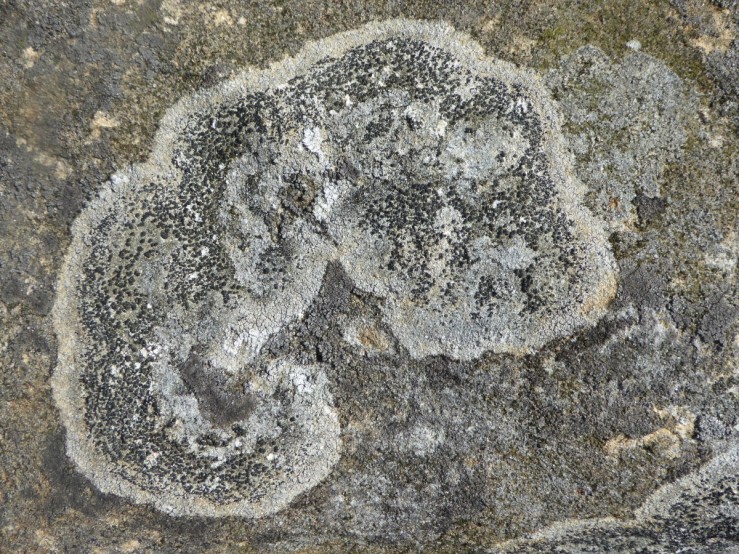
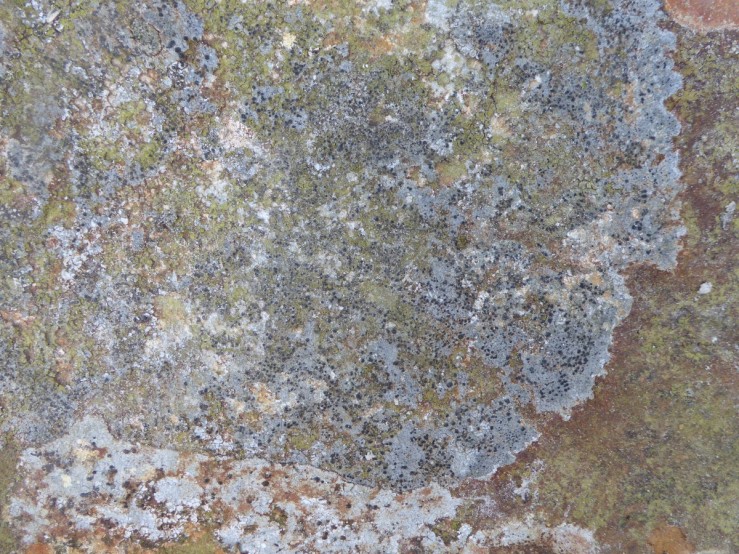
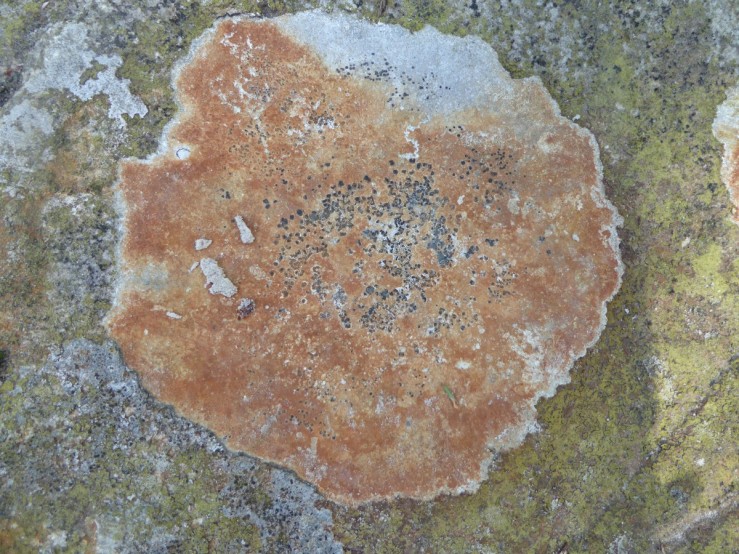

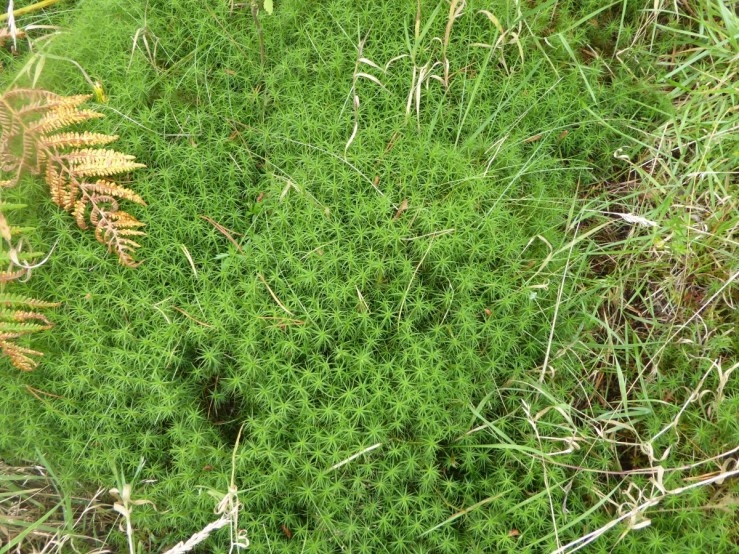
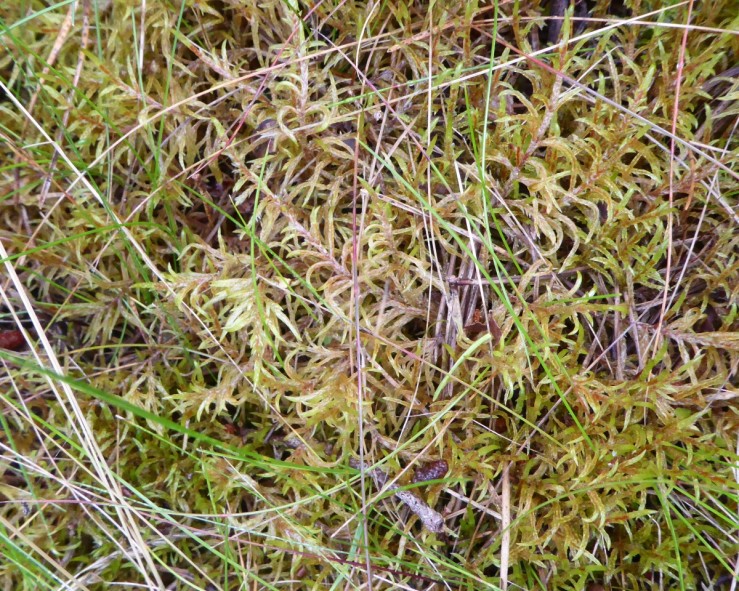
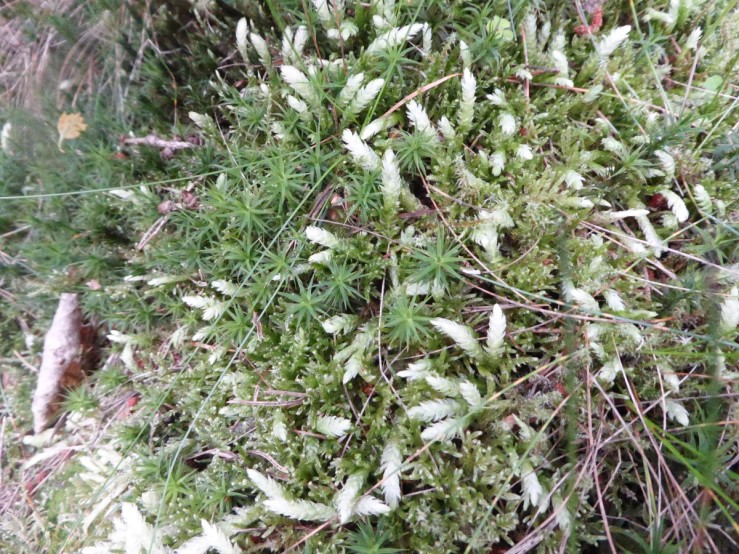
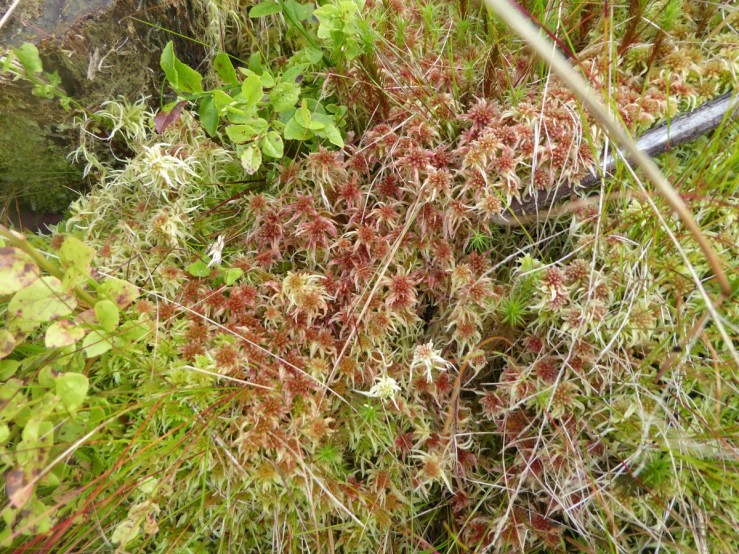
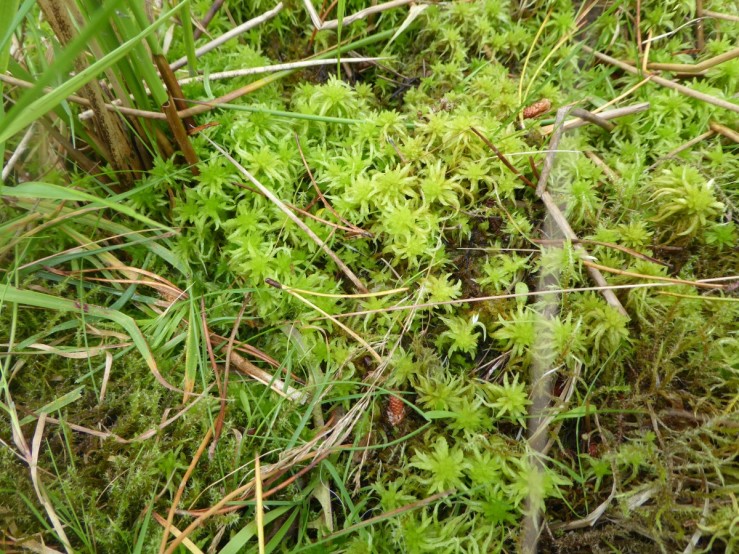
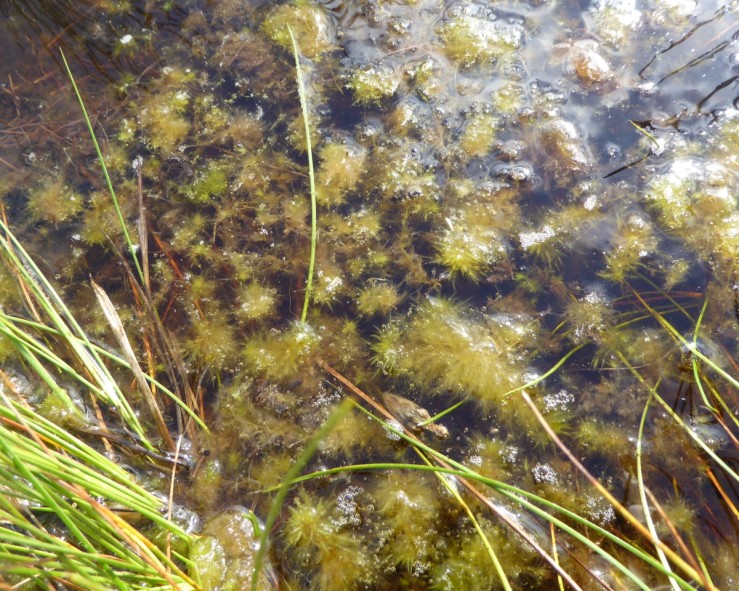
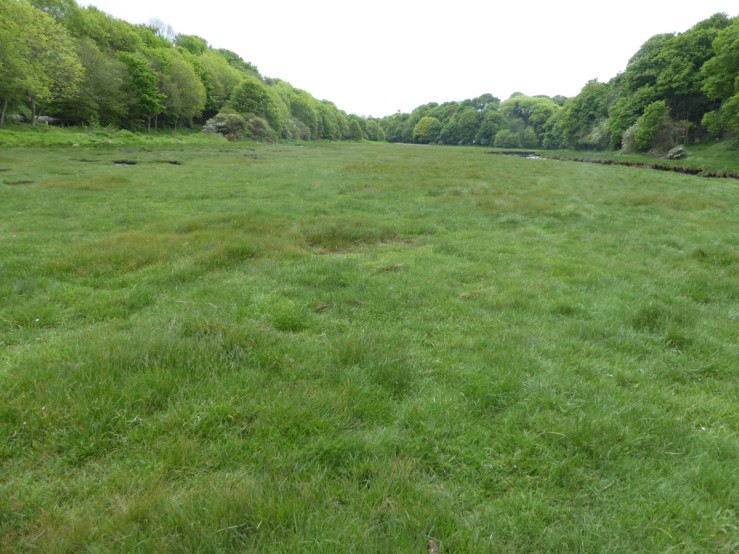
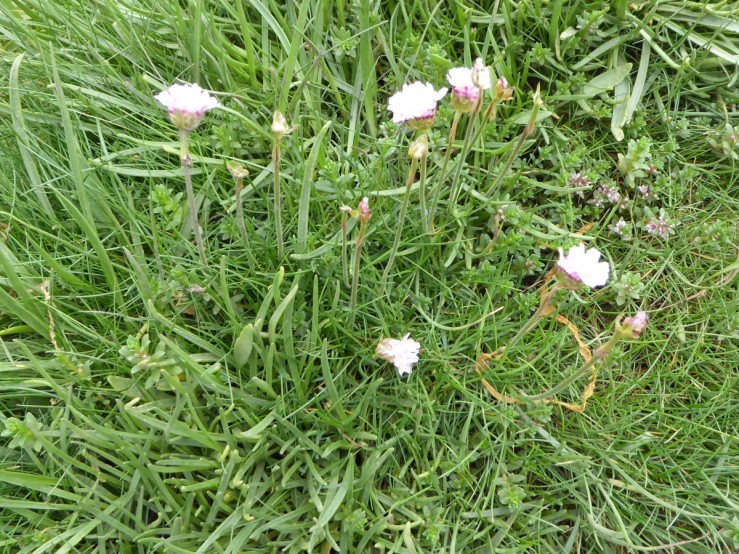
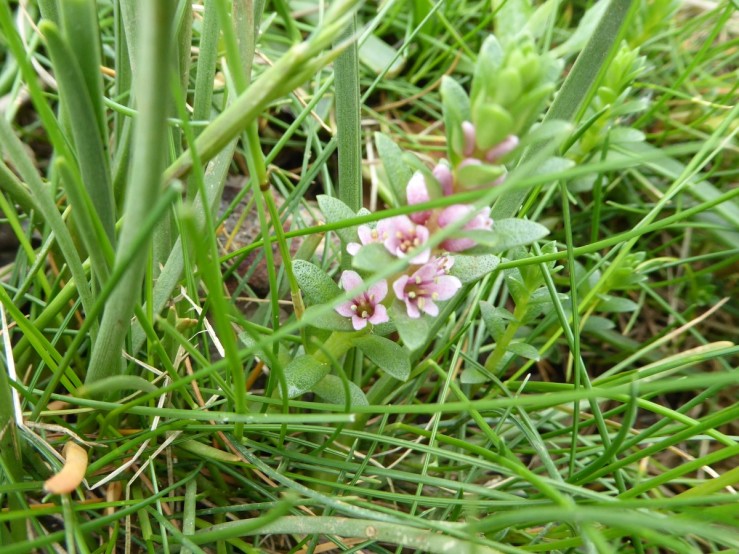
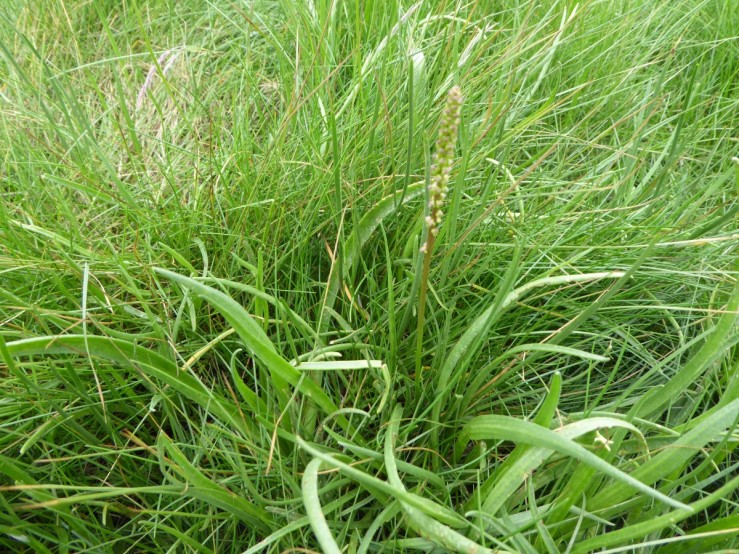
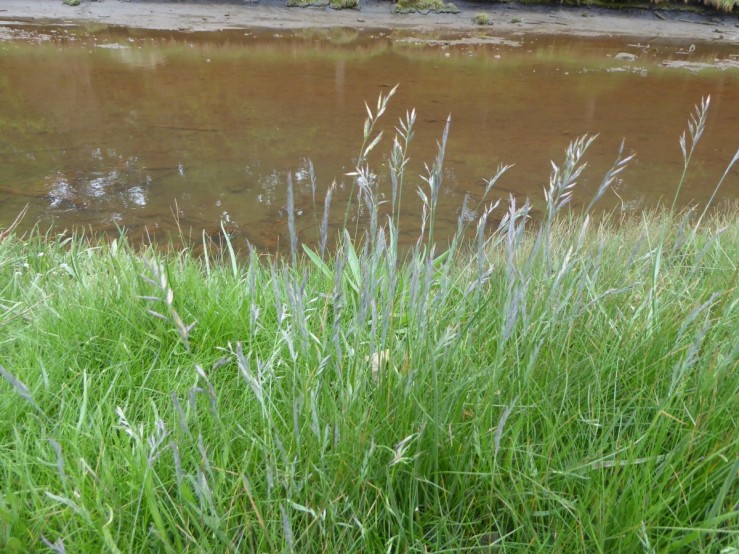
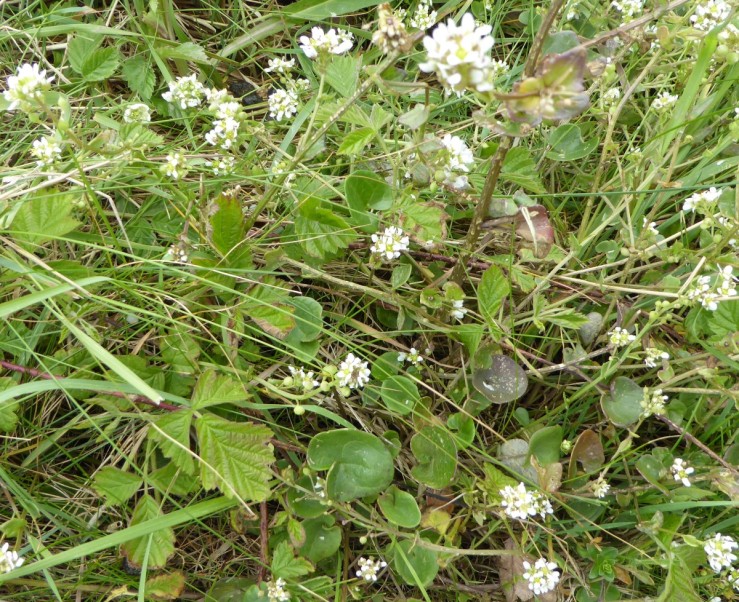
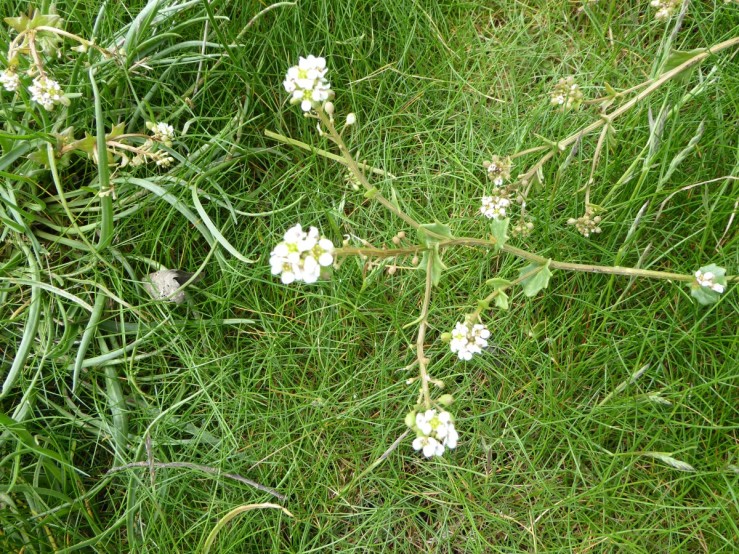
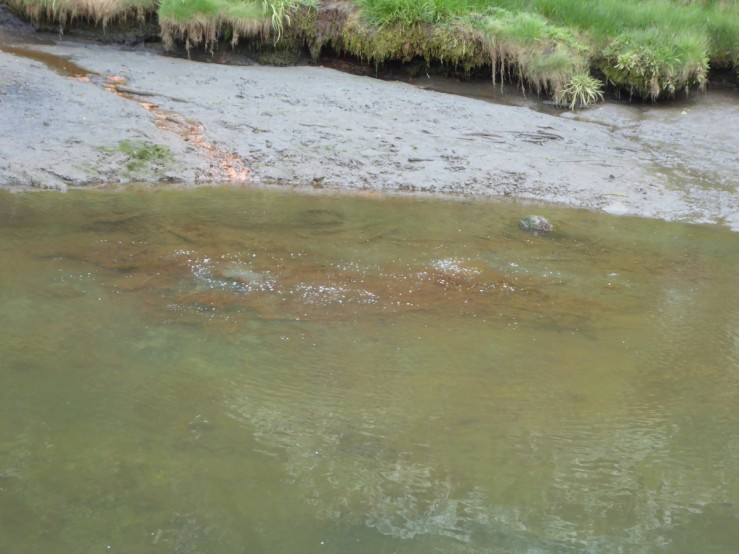
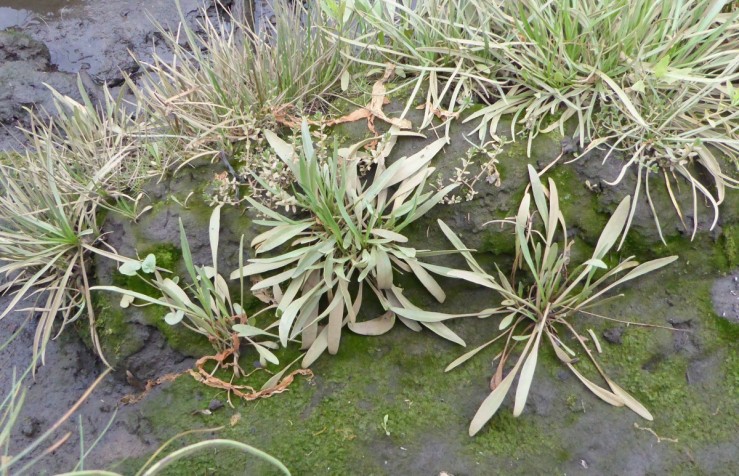
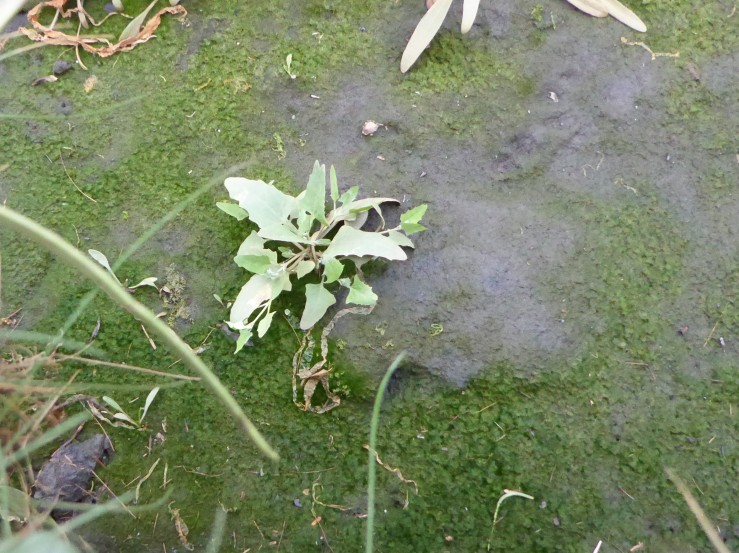
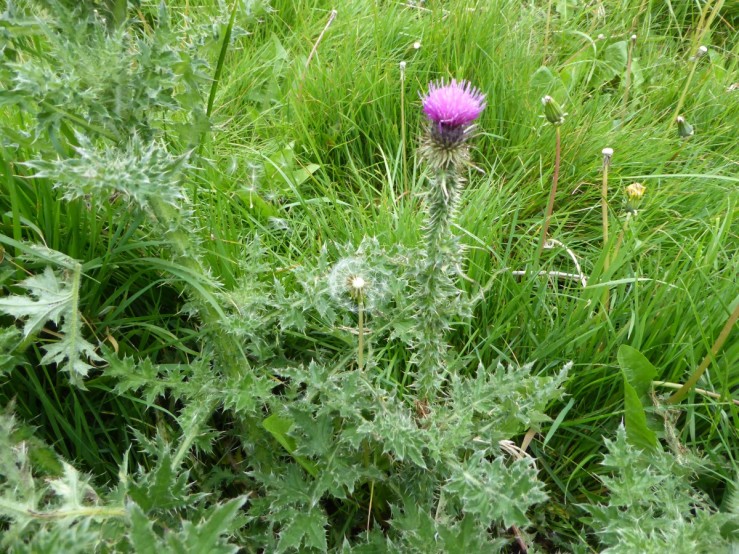 Fine leaved Water Hemlock Dropwort (Oenanthe crocata) grows further up by a freshwater marsh where Bulrush (Typha Latifolia) had been planted in an attempt to clean the polluted water.
Fine leaved Water Hemlock Dropwort (Oenanthe crocata) grows further up by a freshwater marsh where Bulrush (Typha Latifolia) had been planted in an attempt to clean the polluted water.